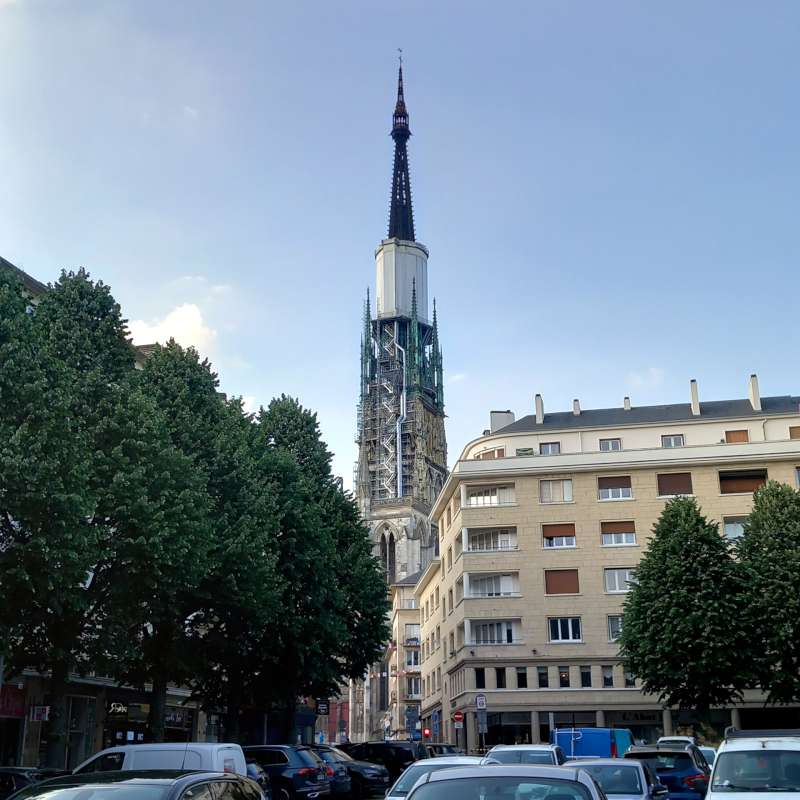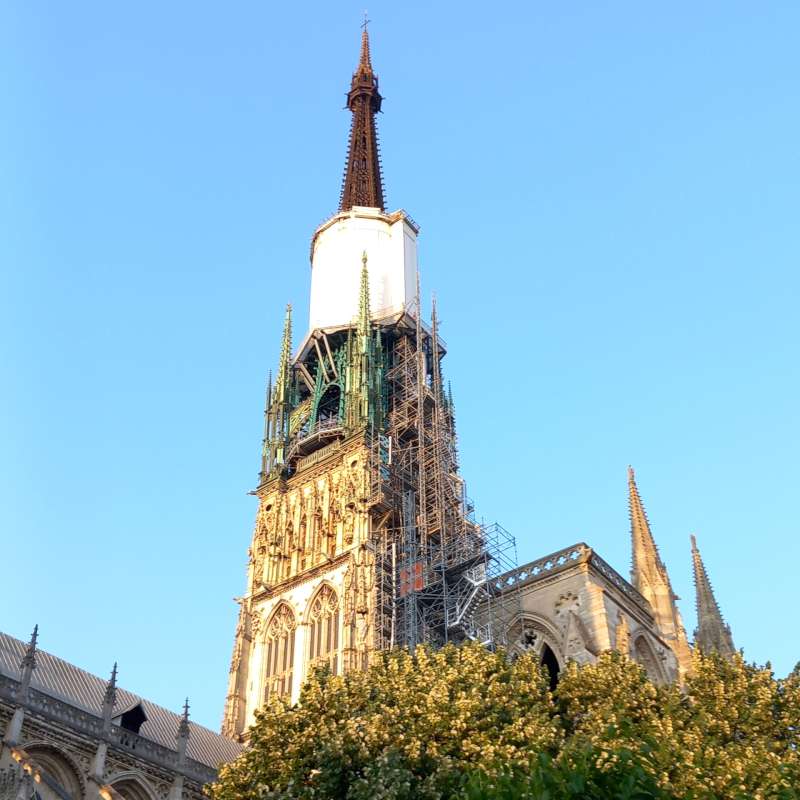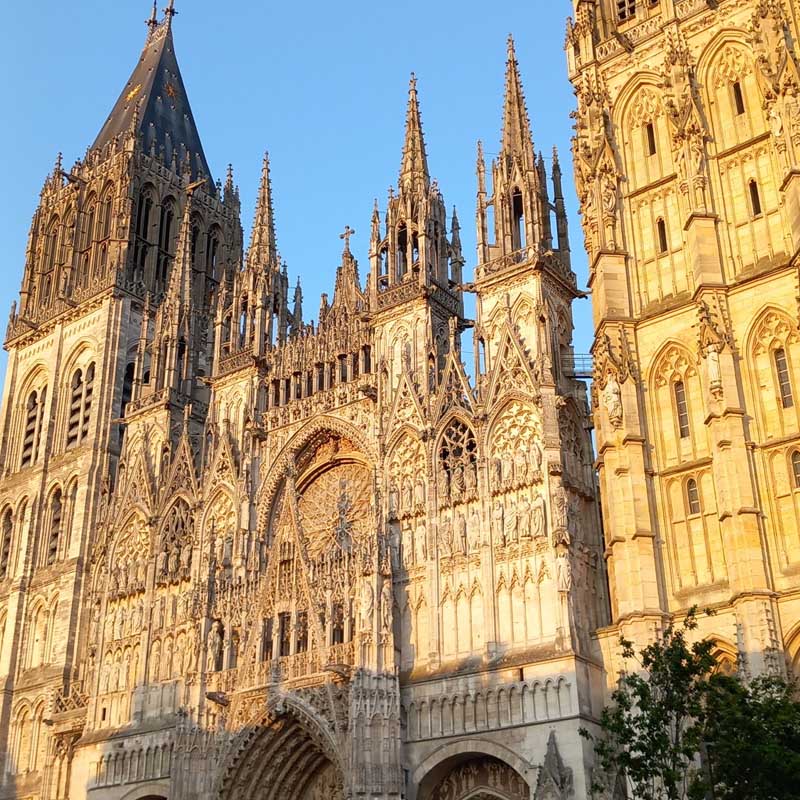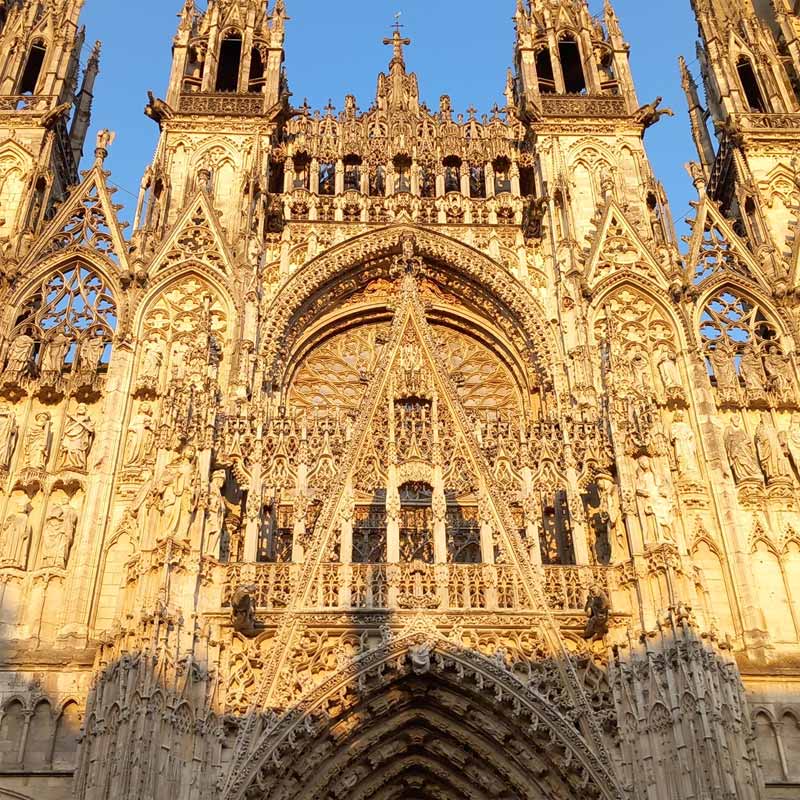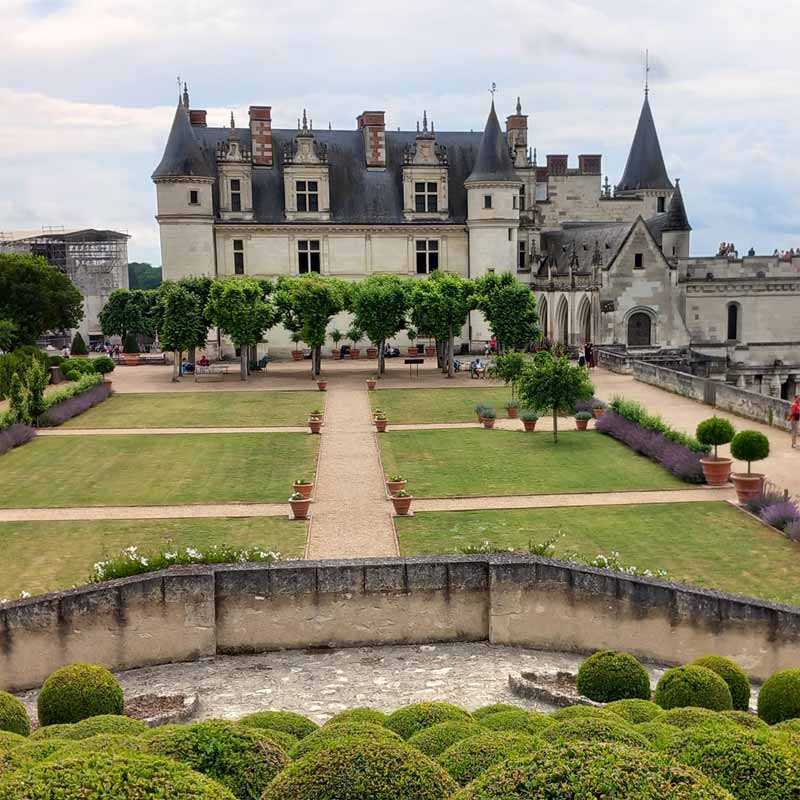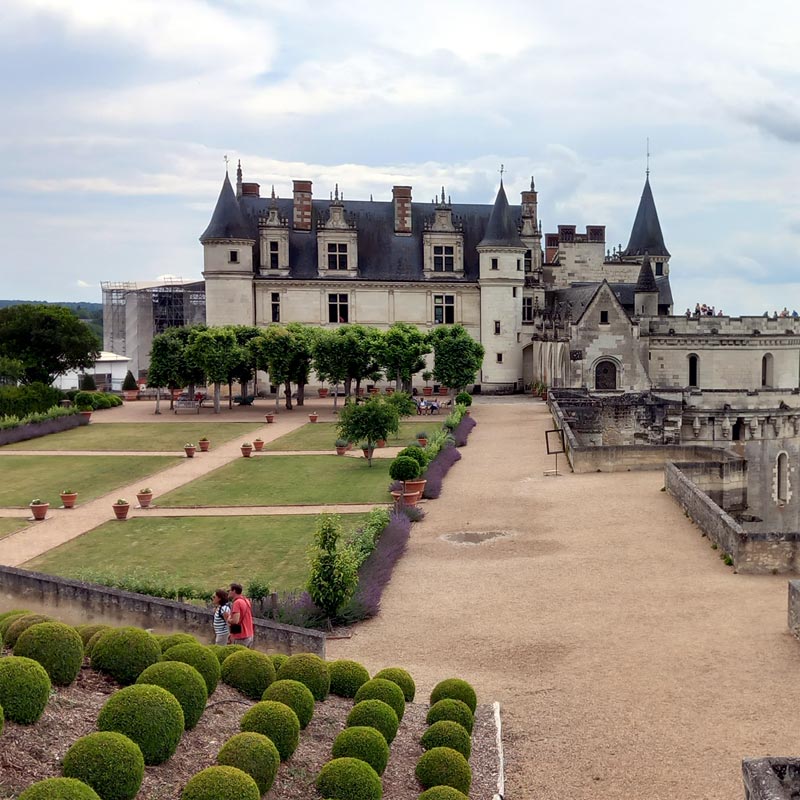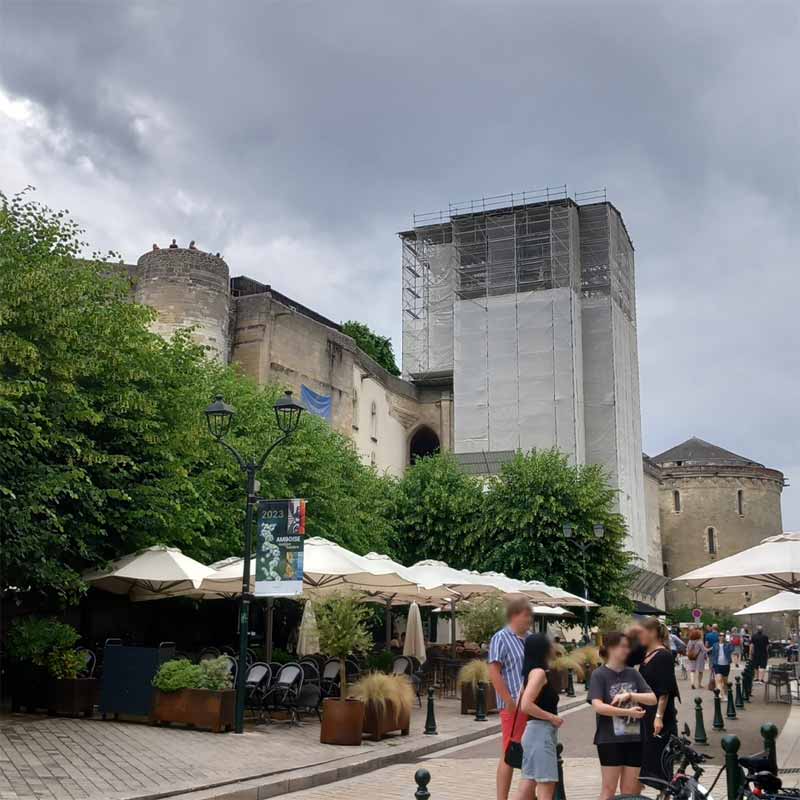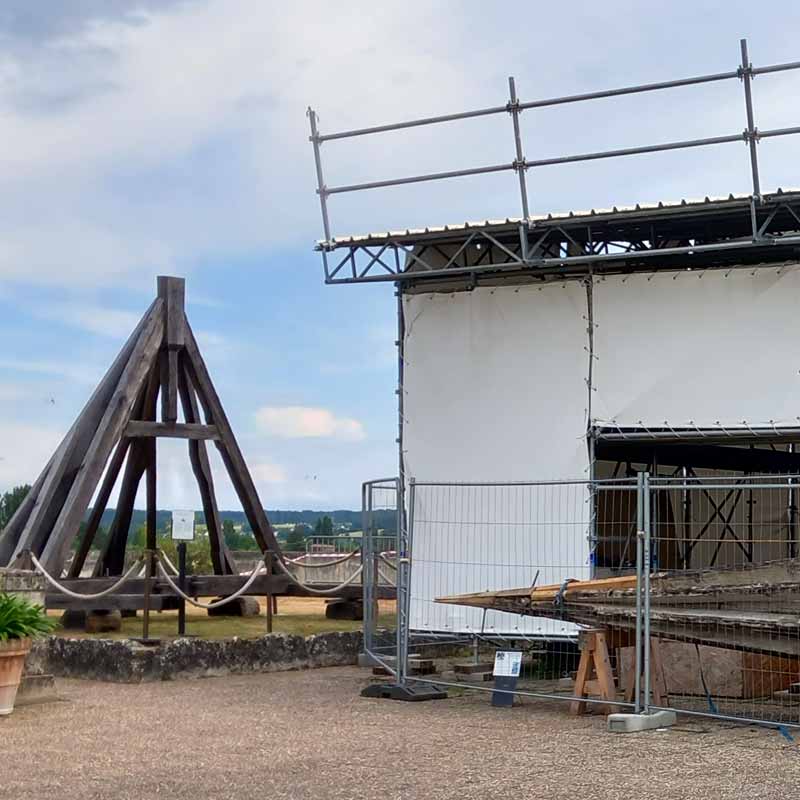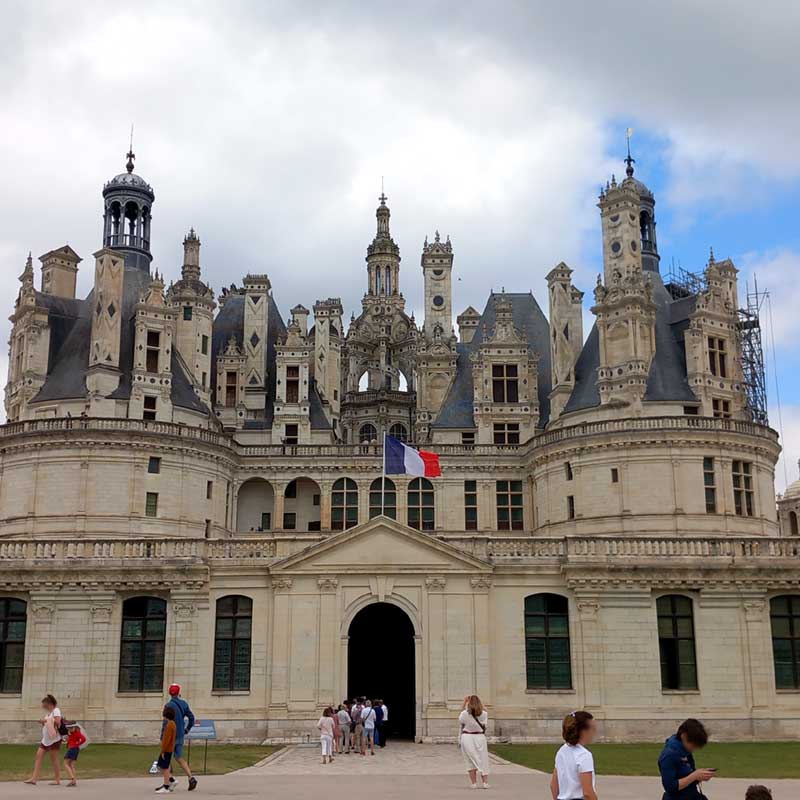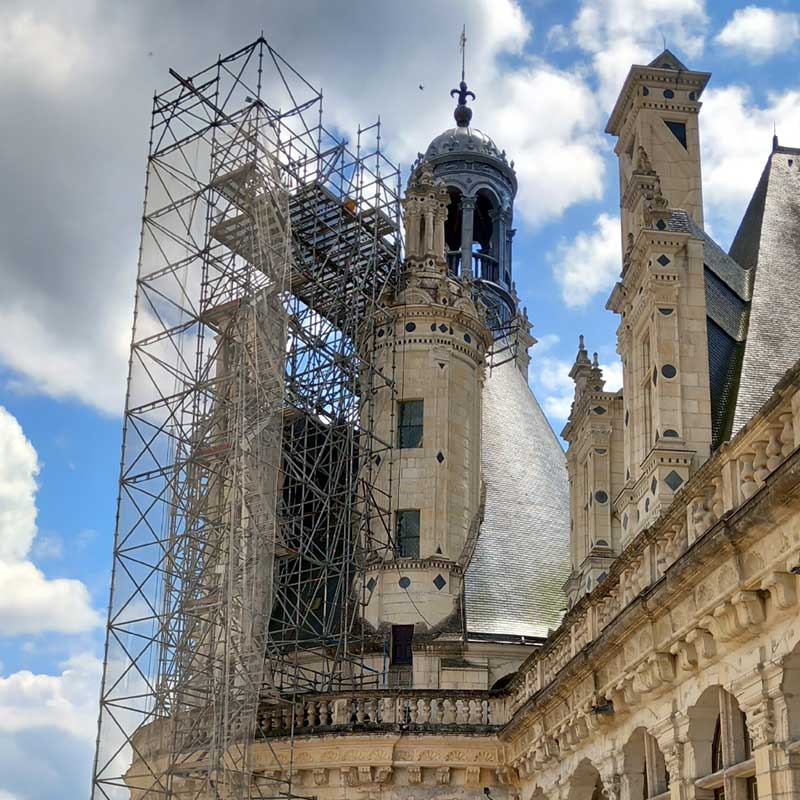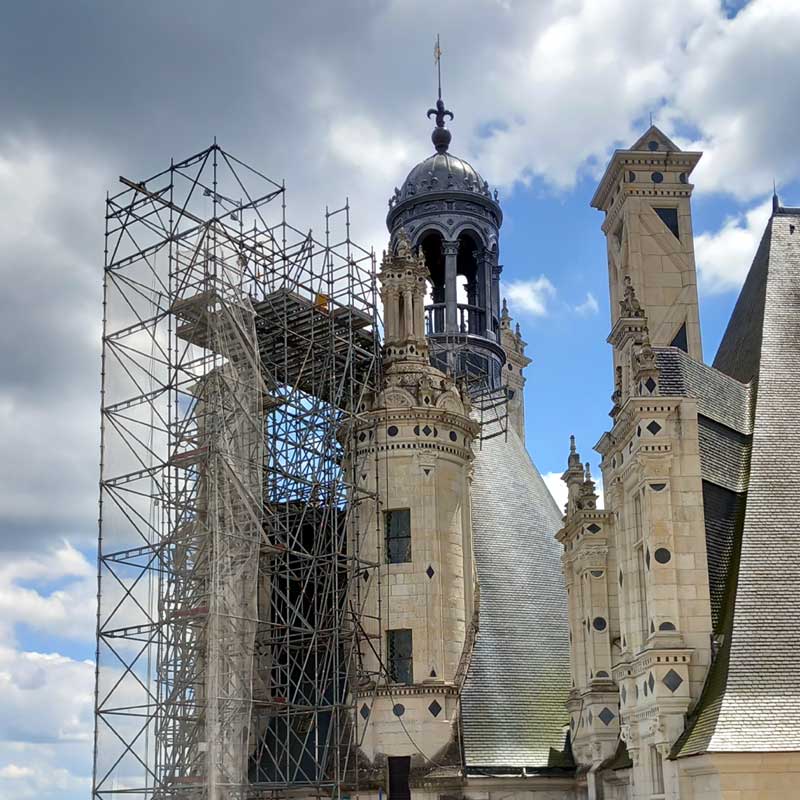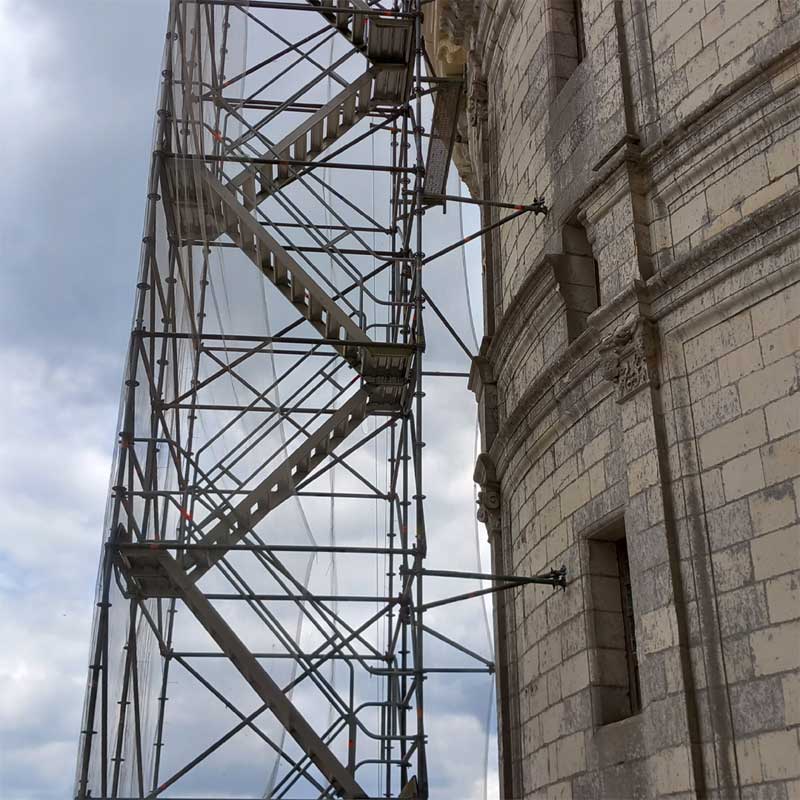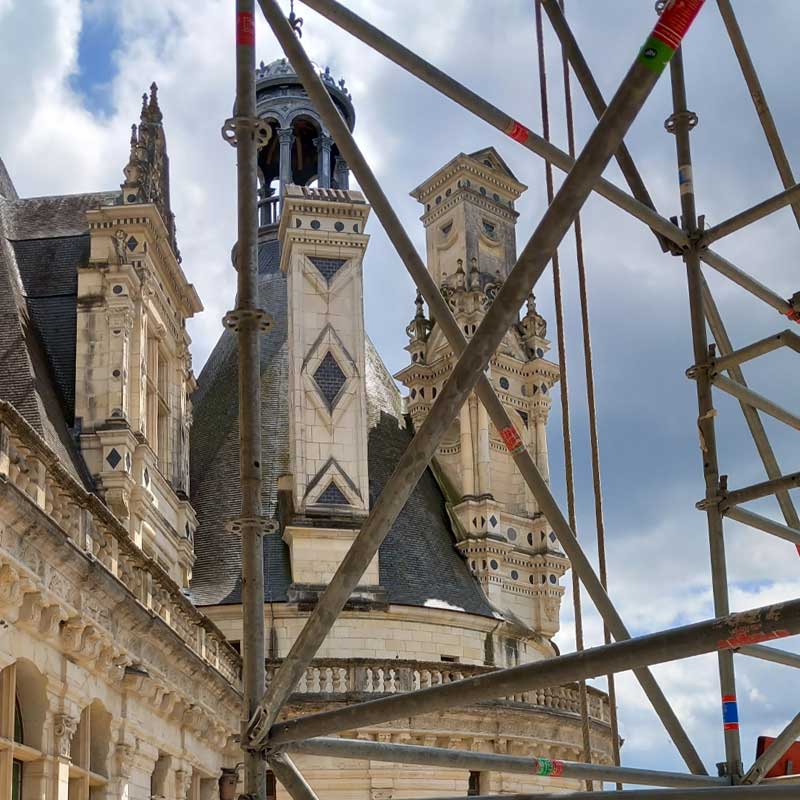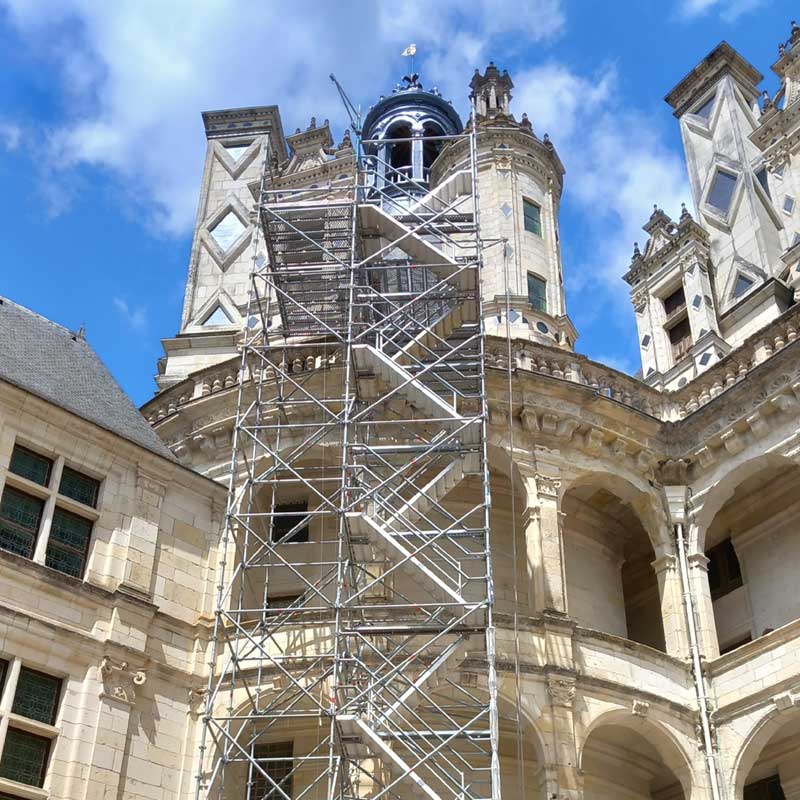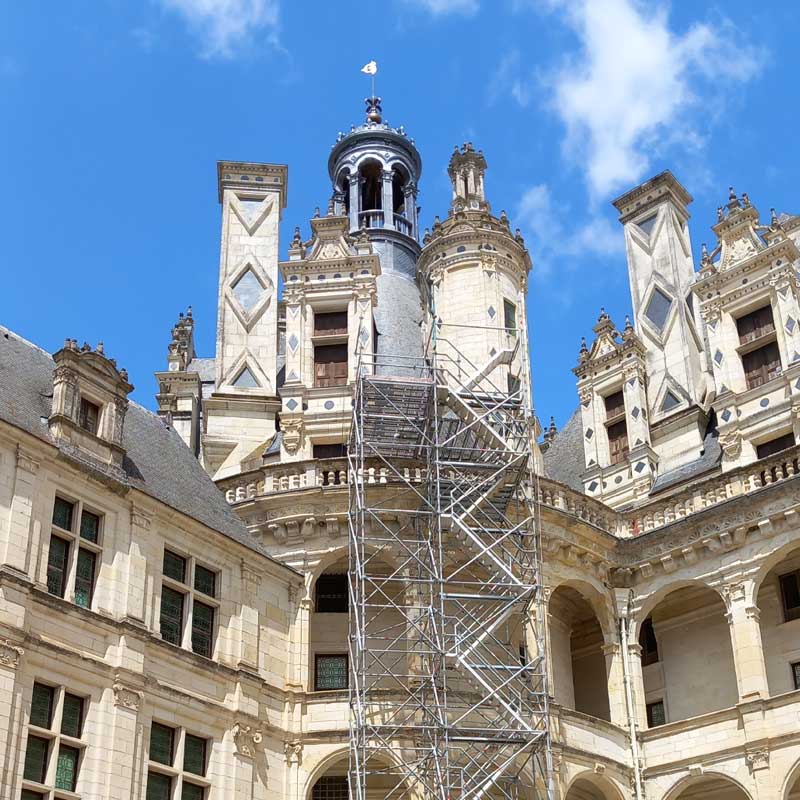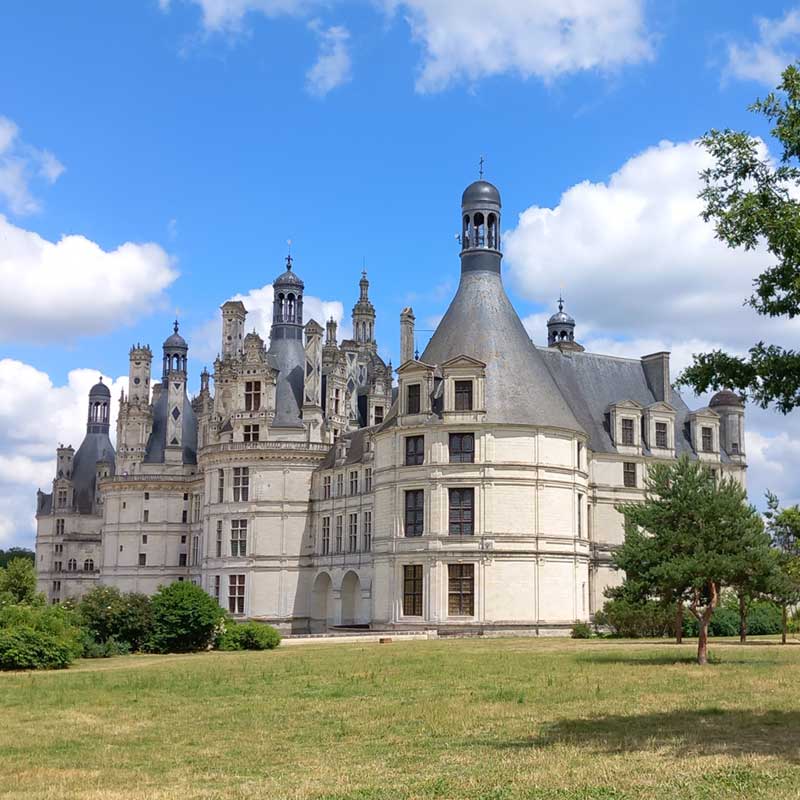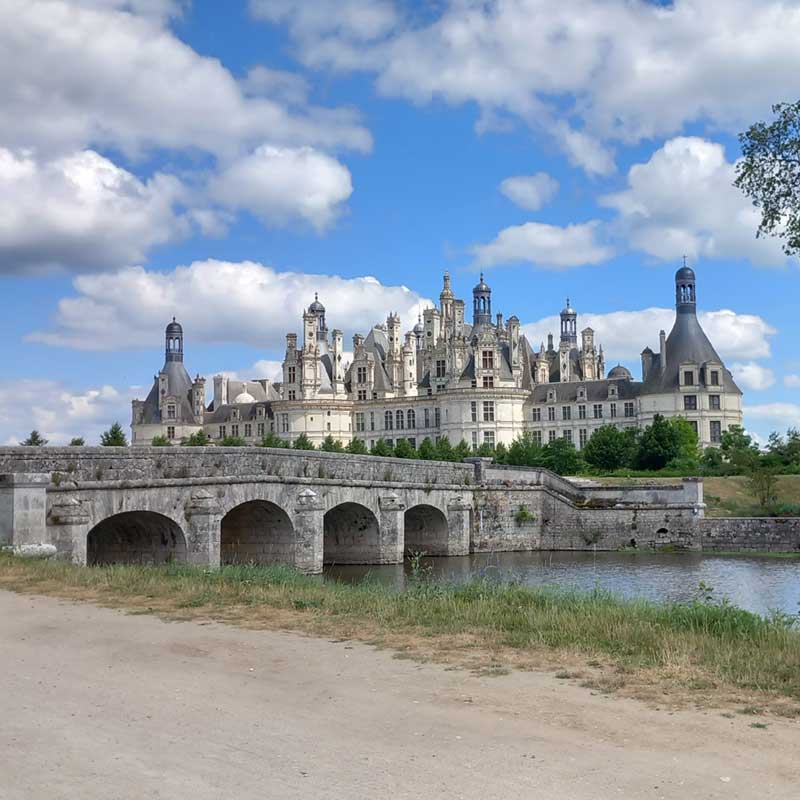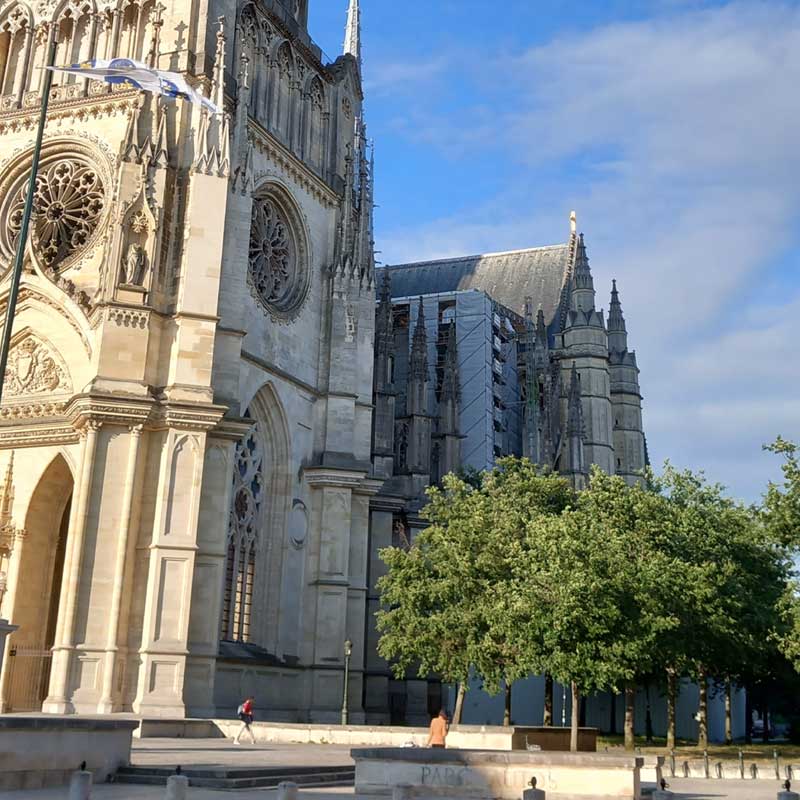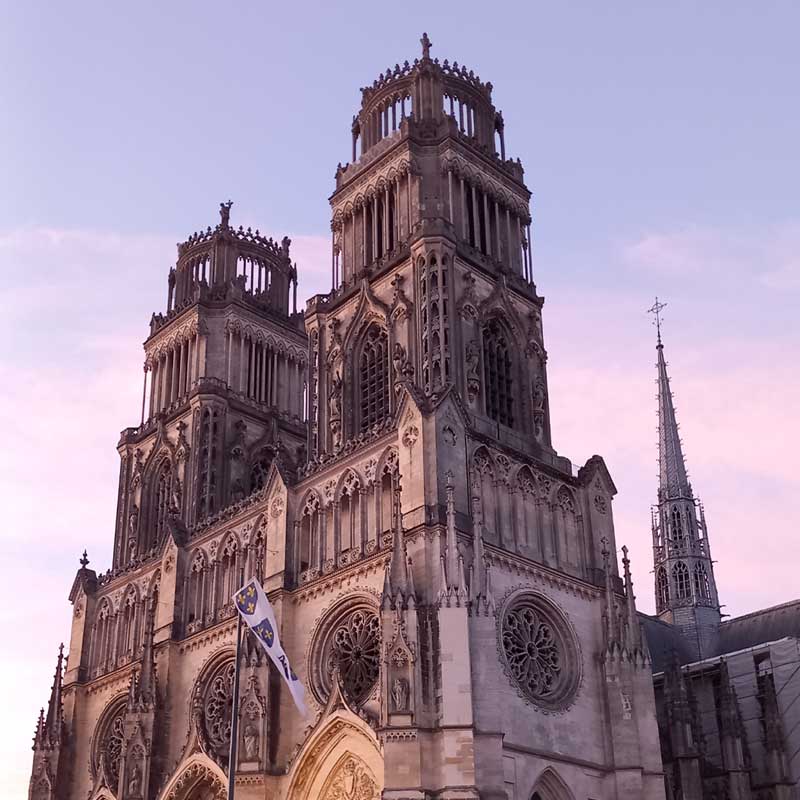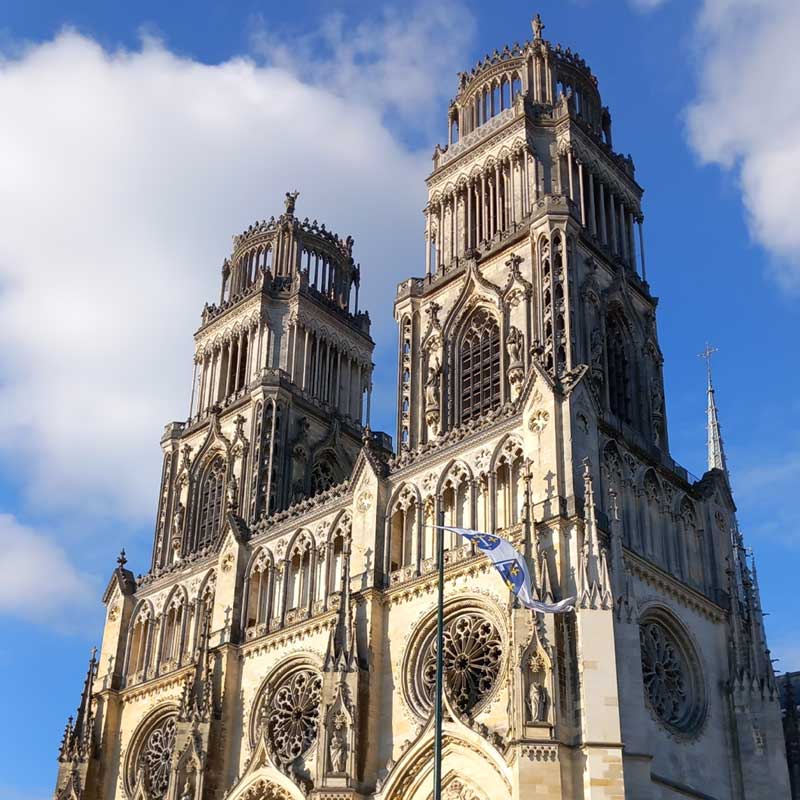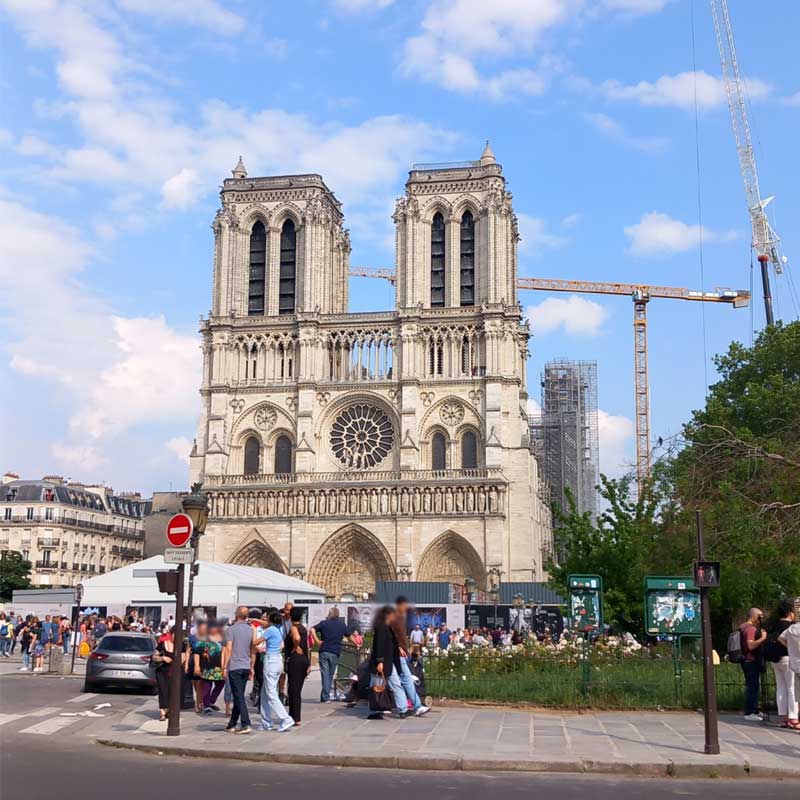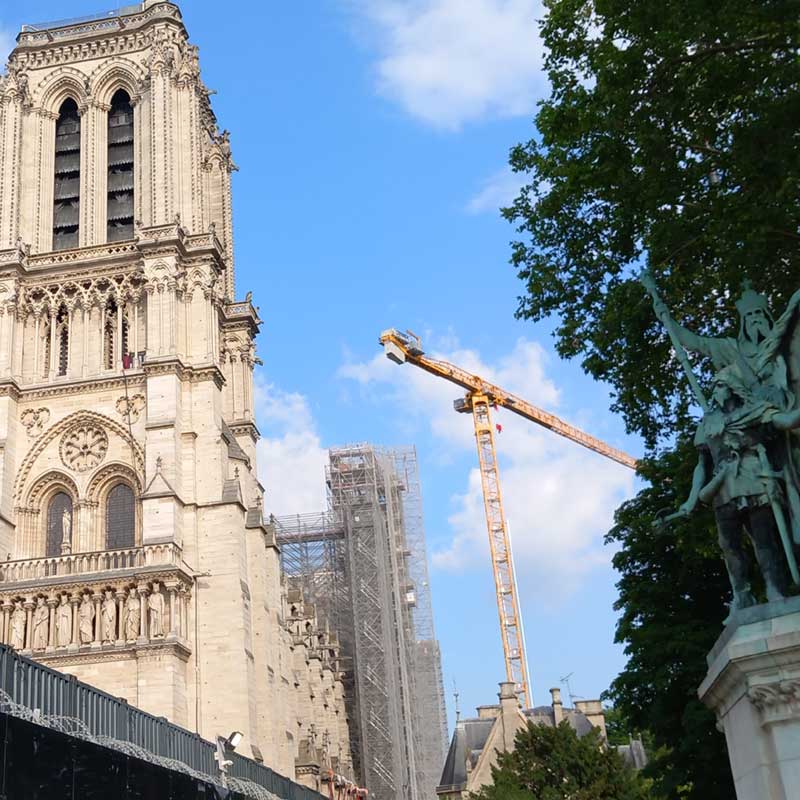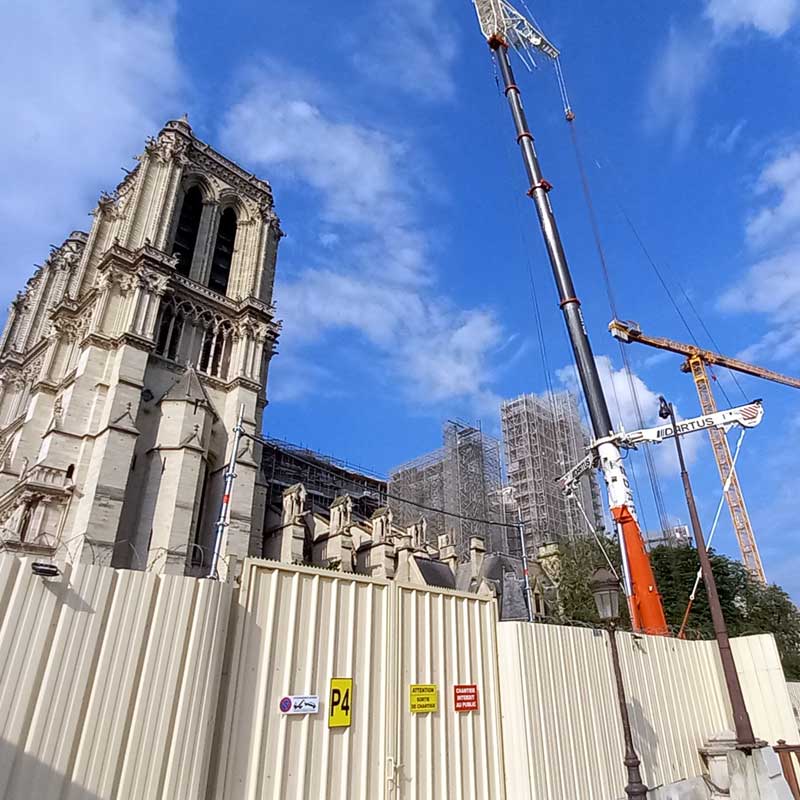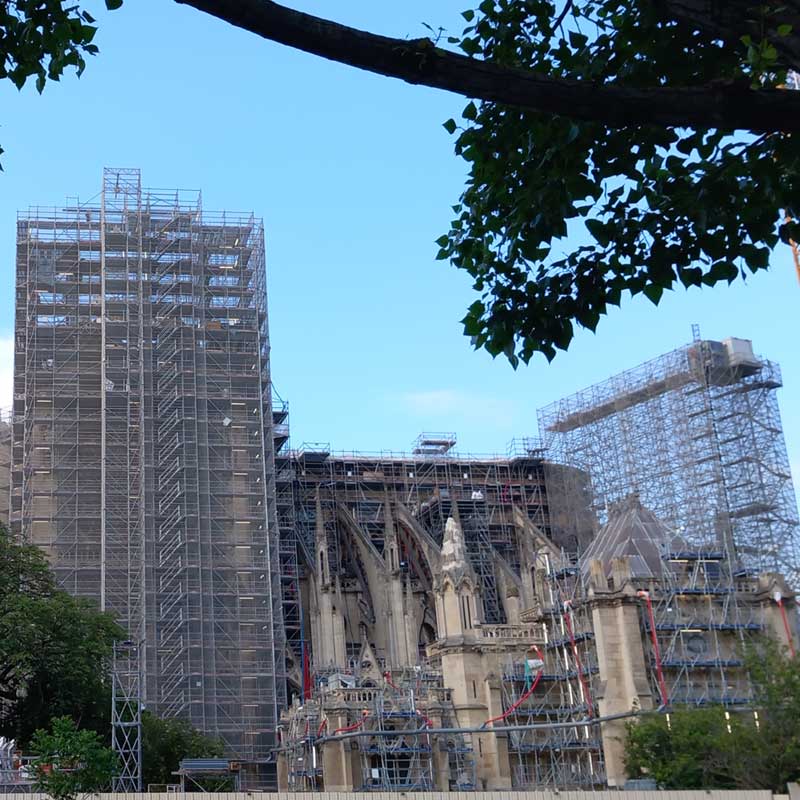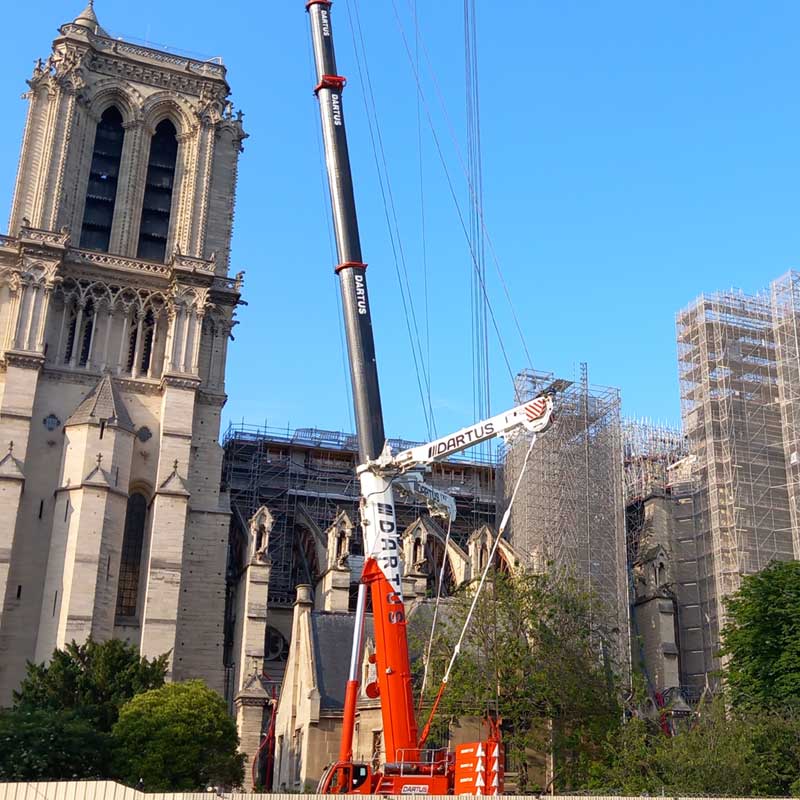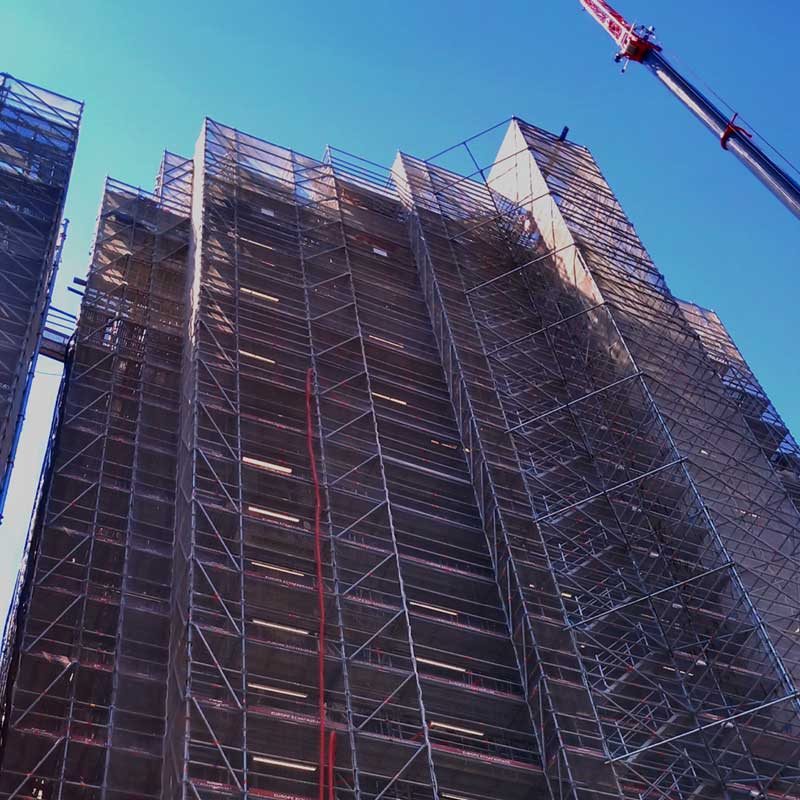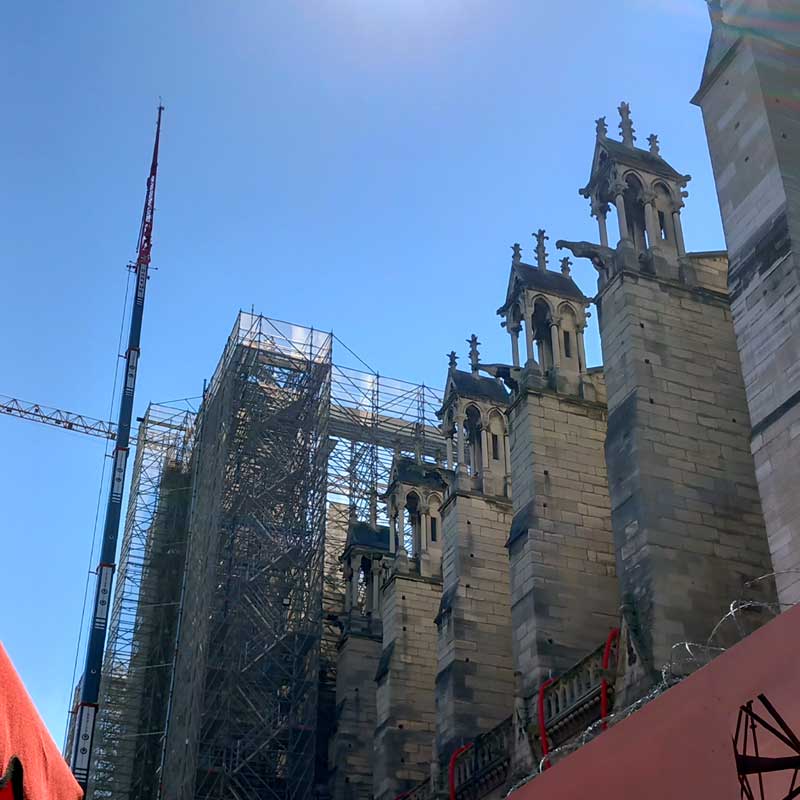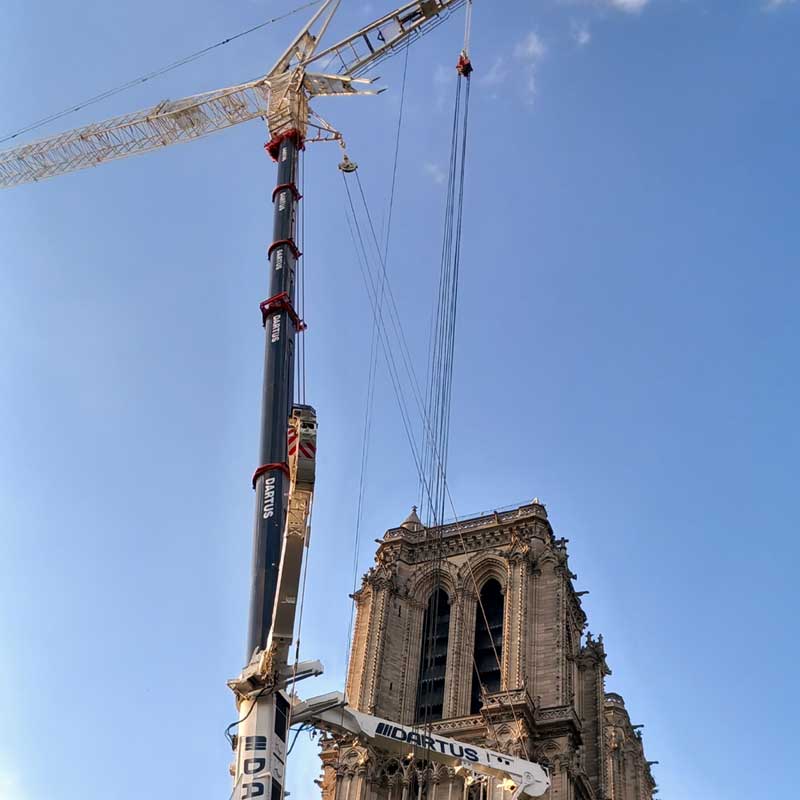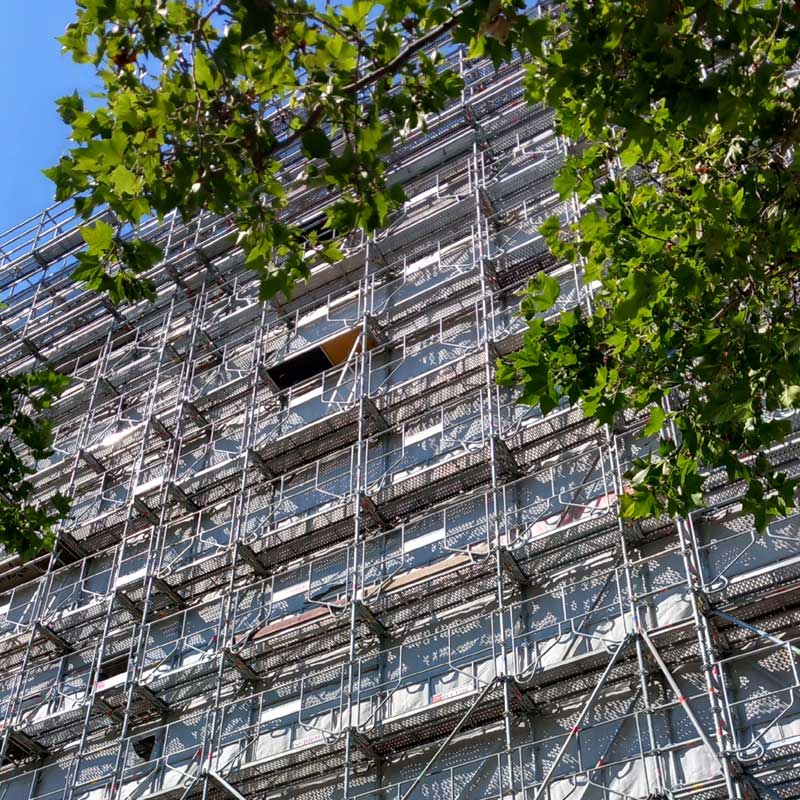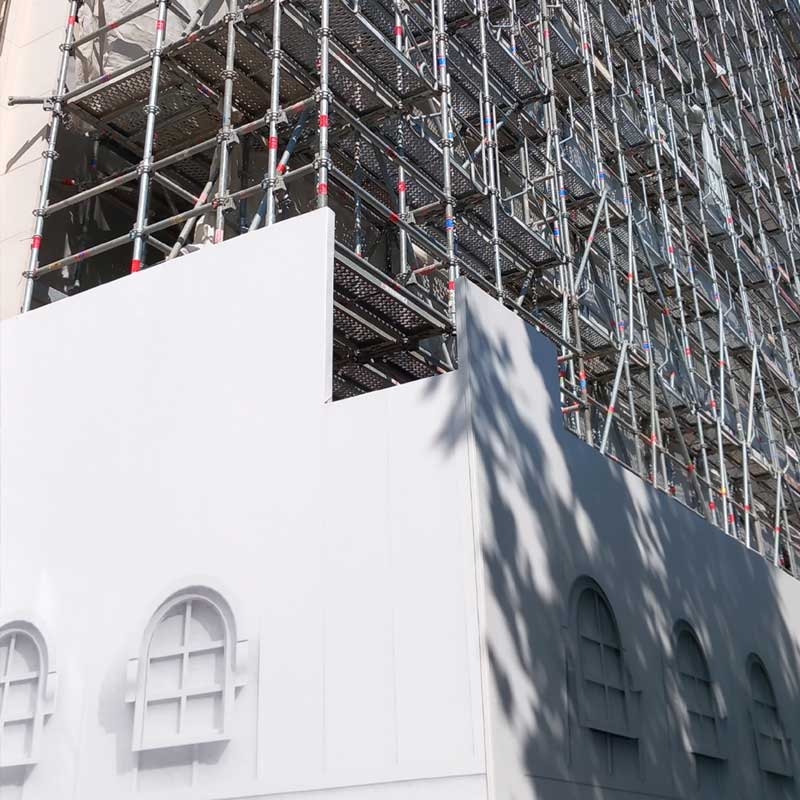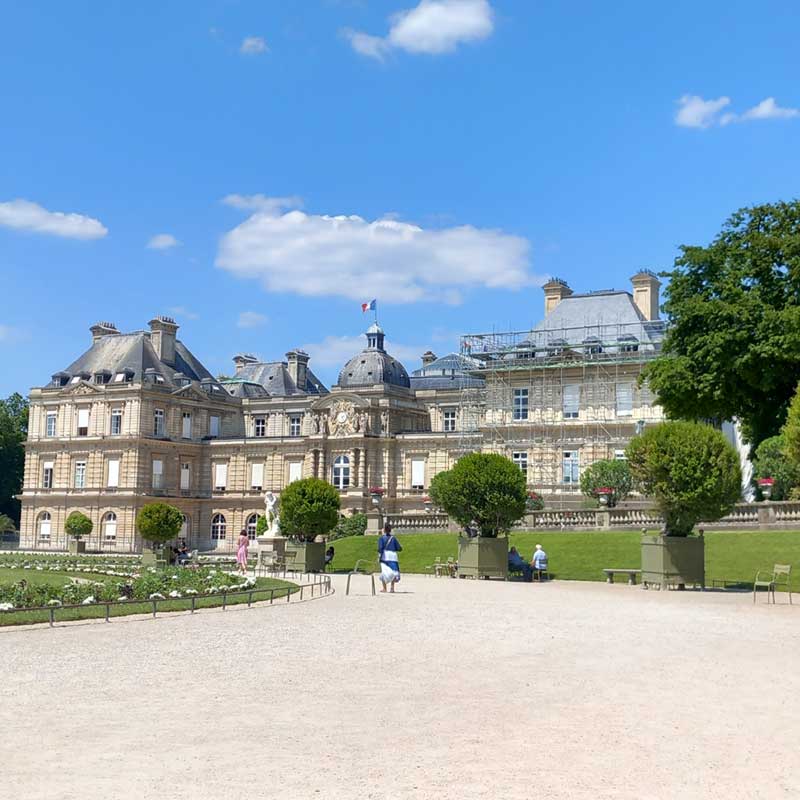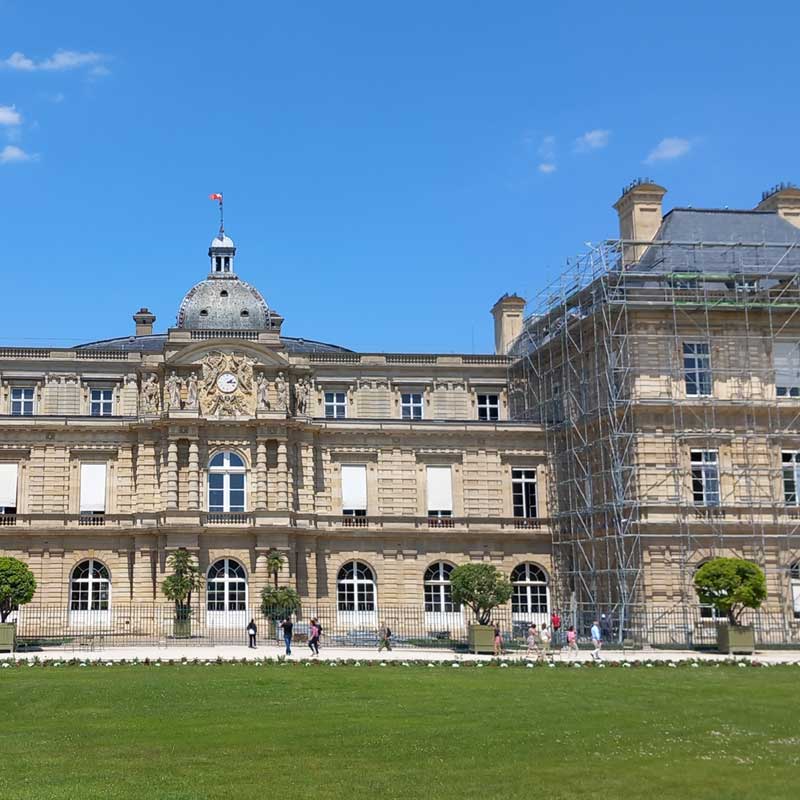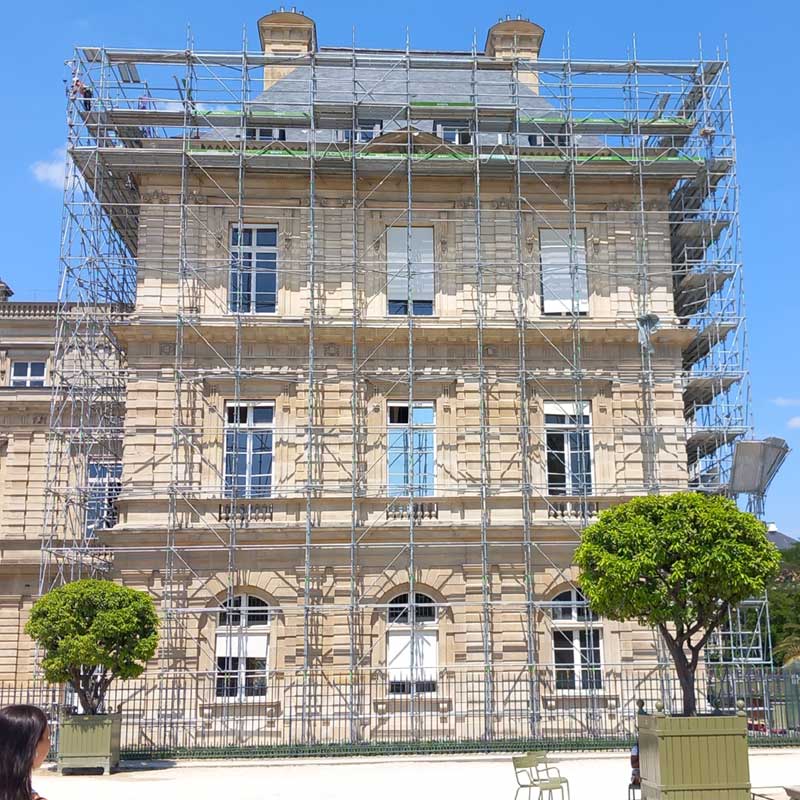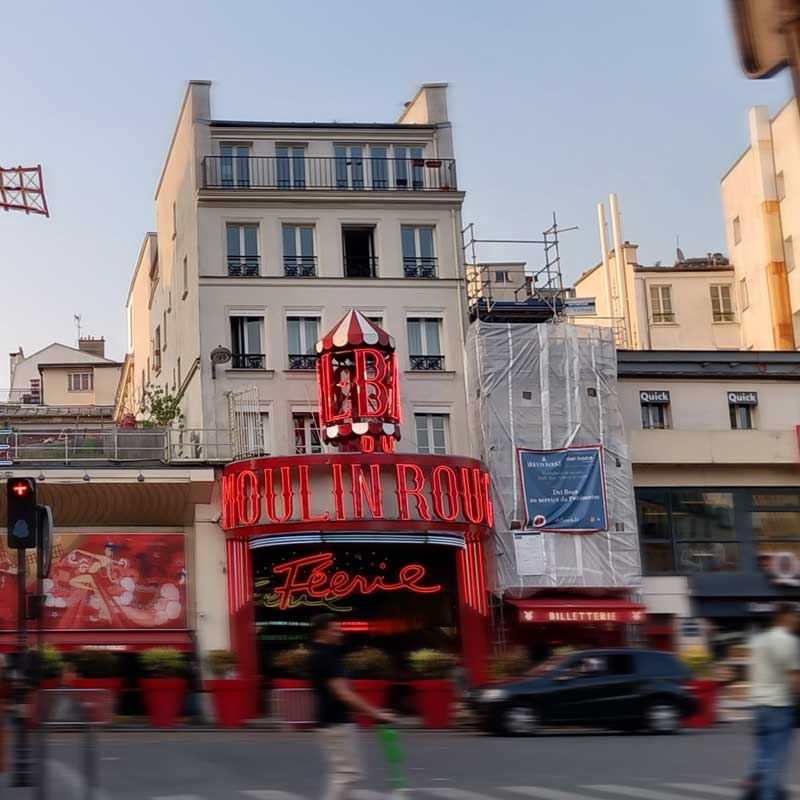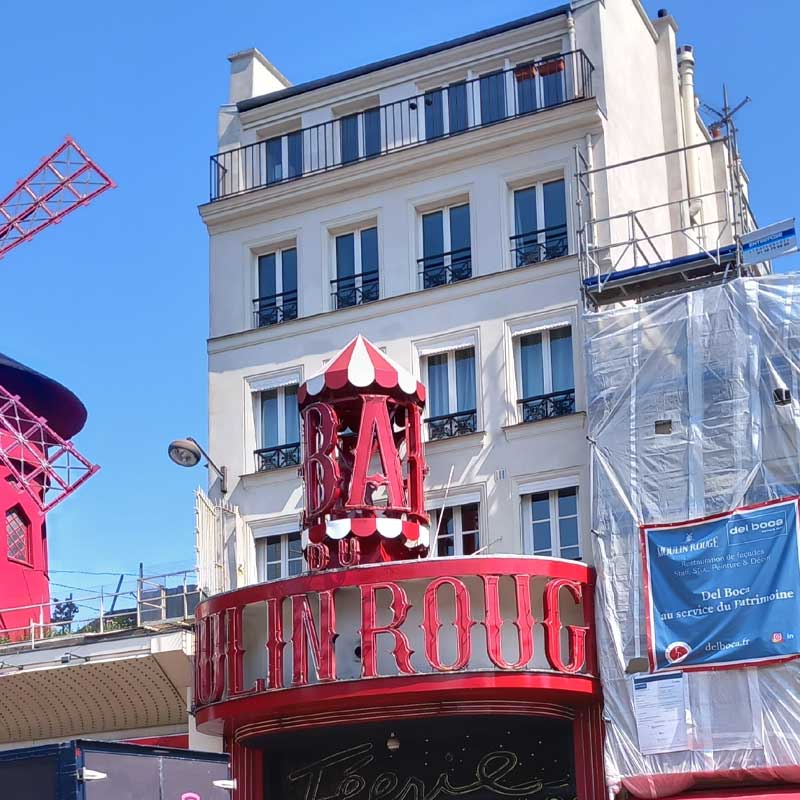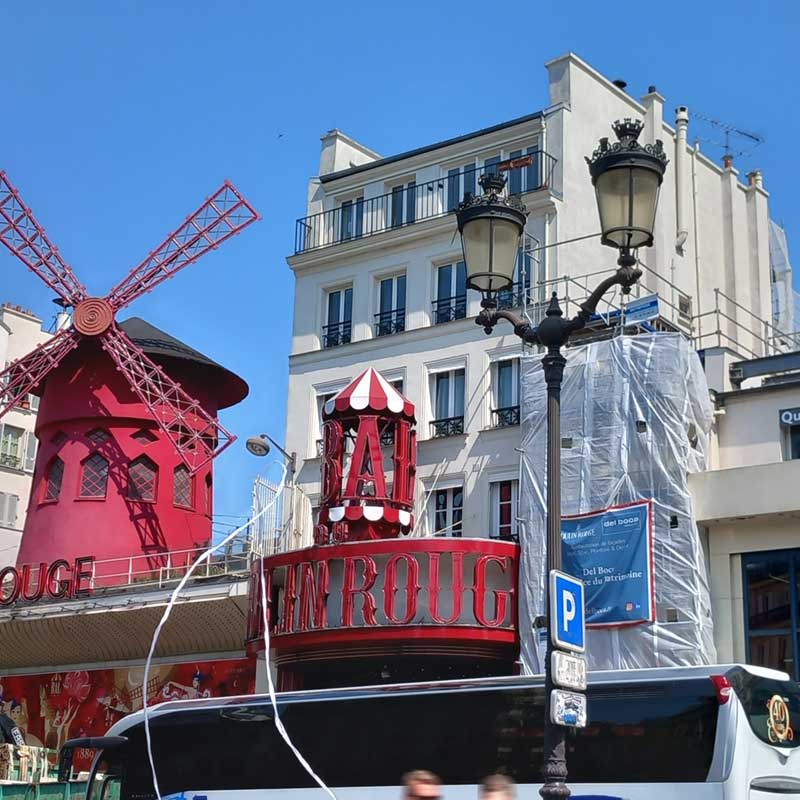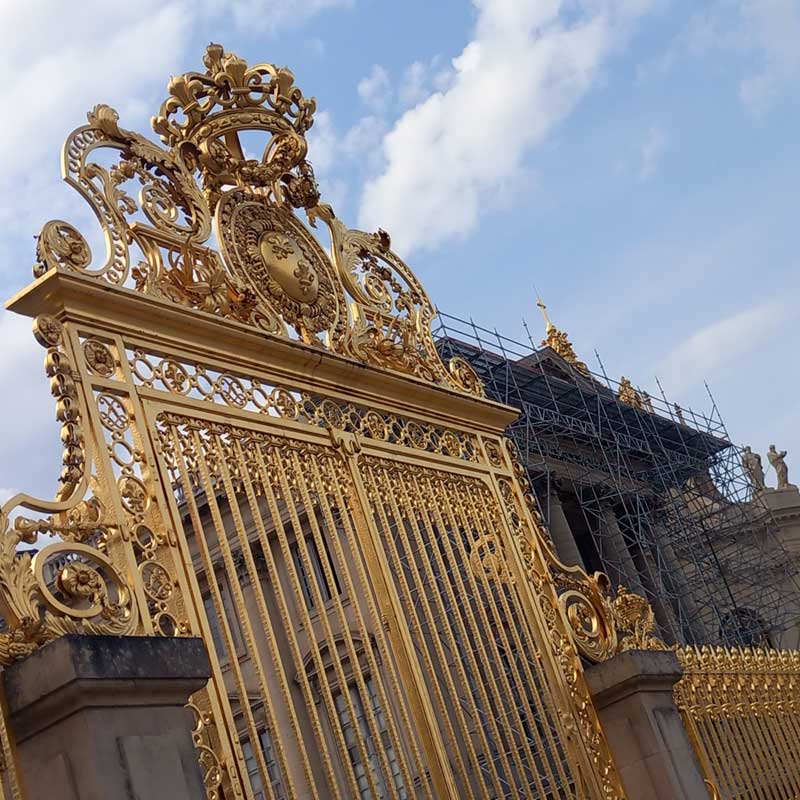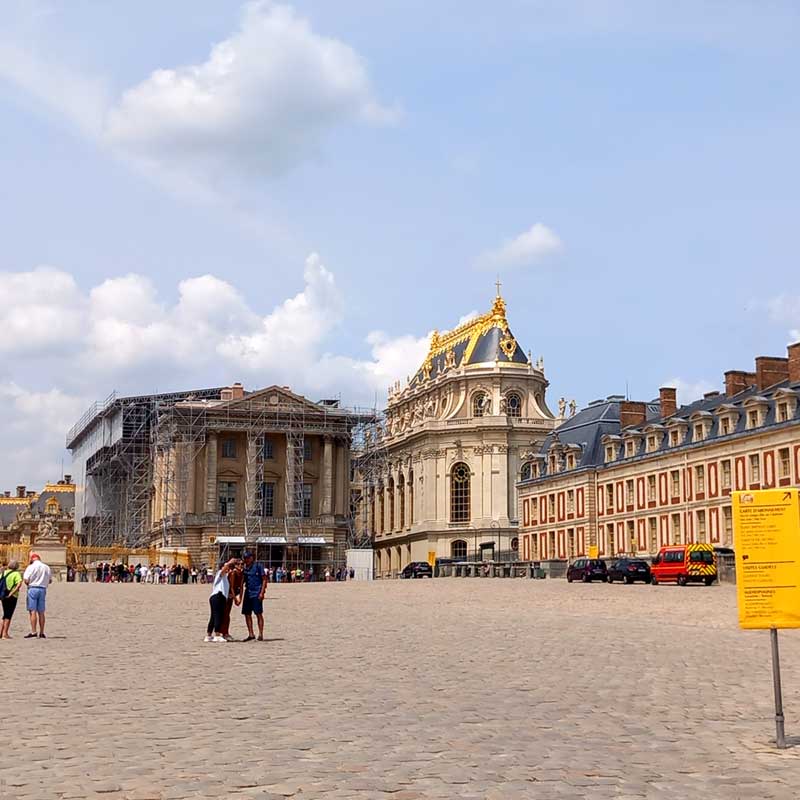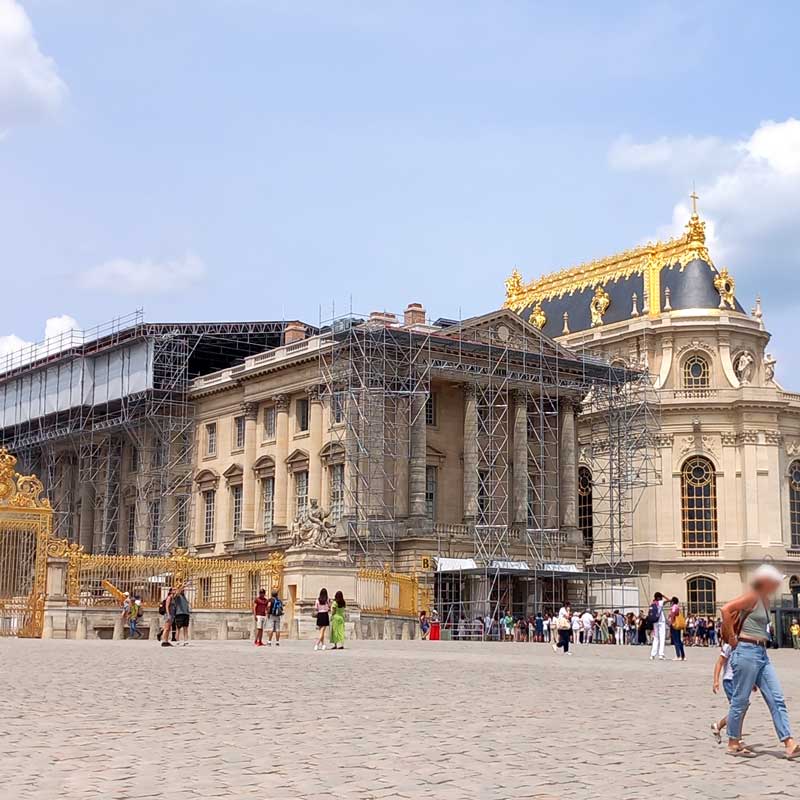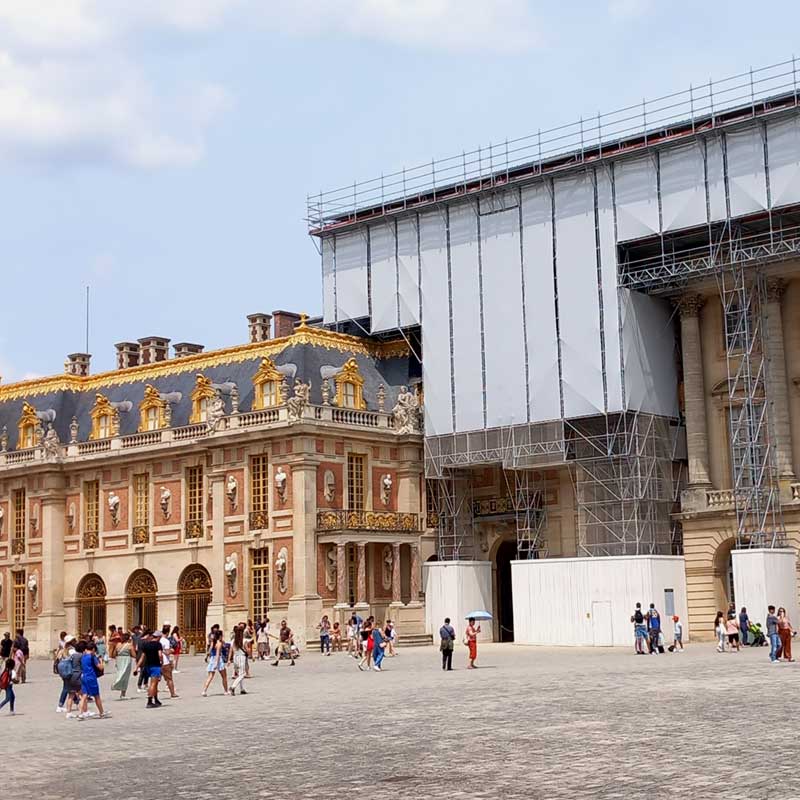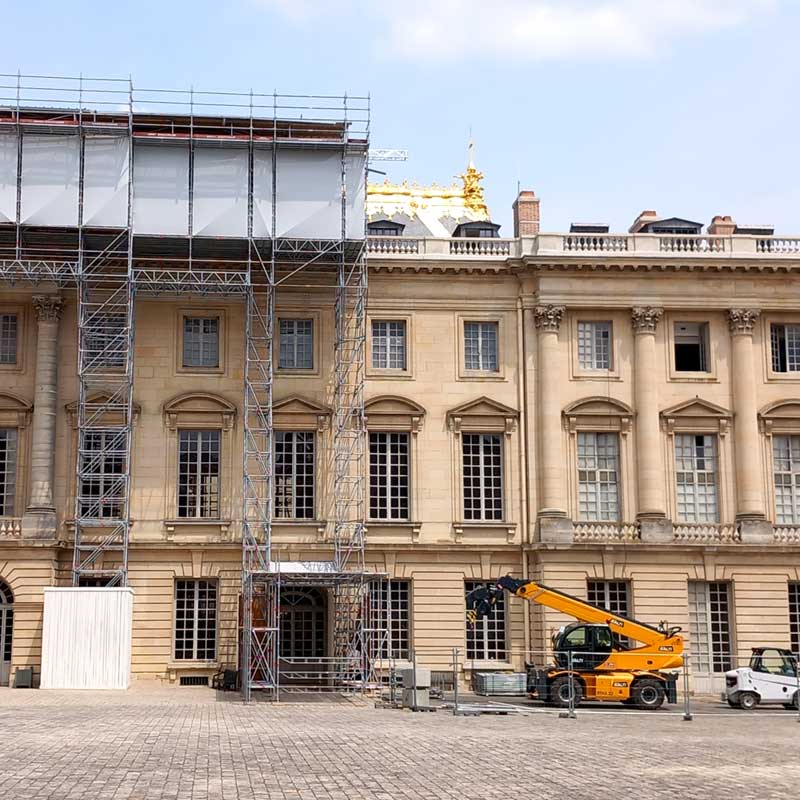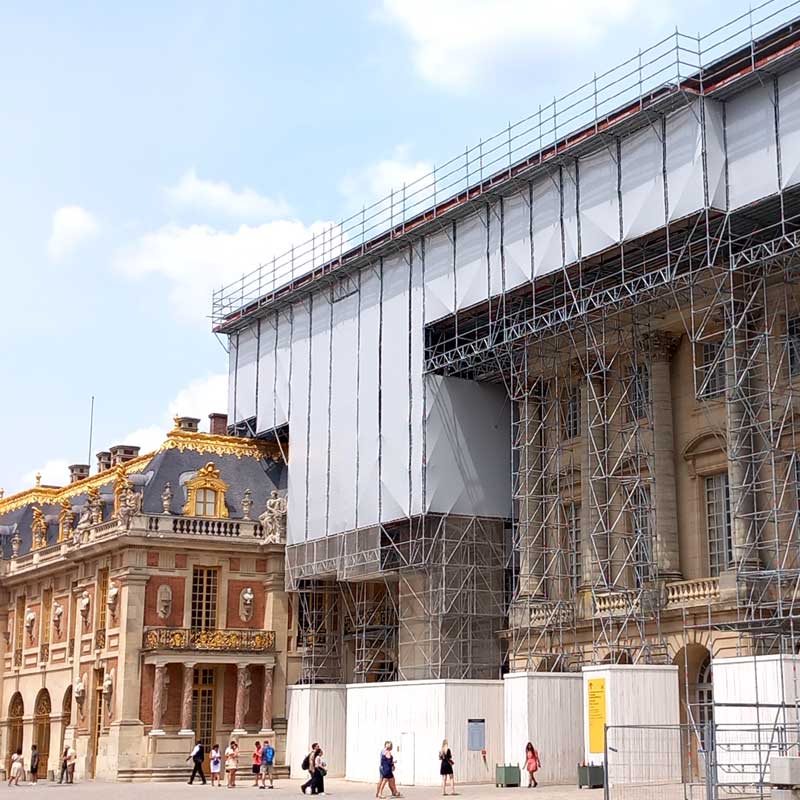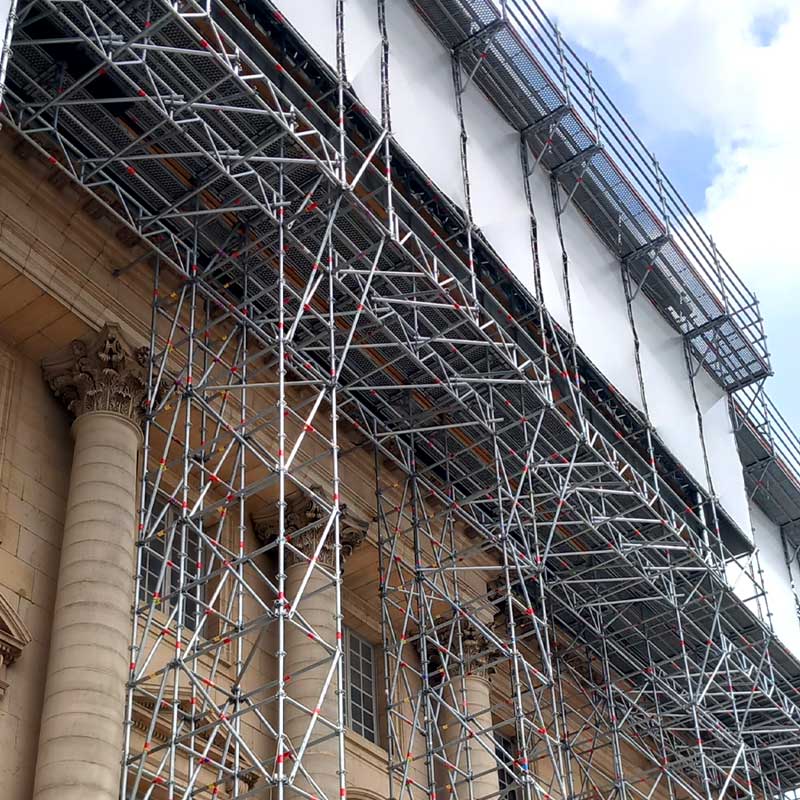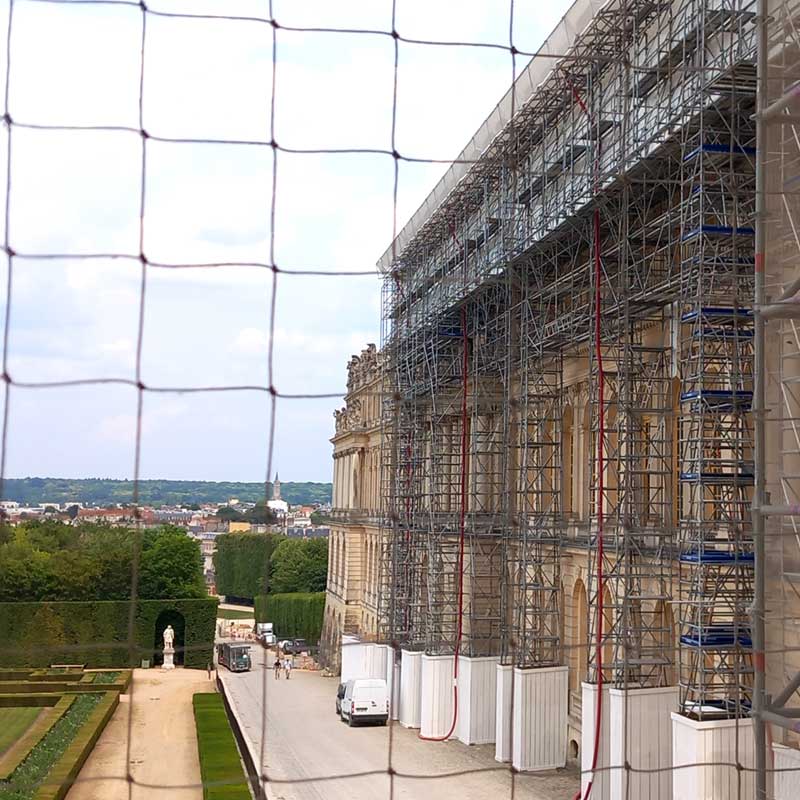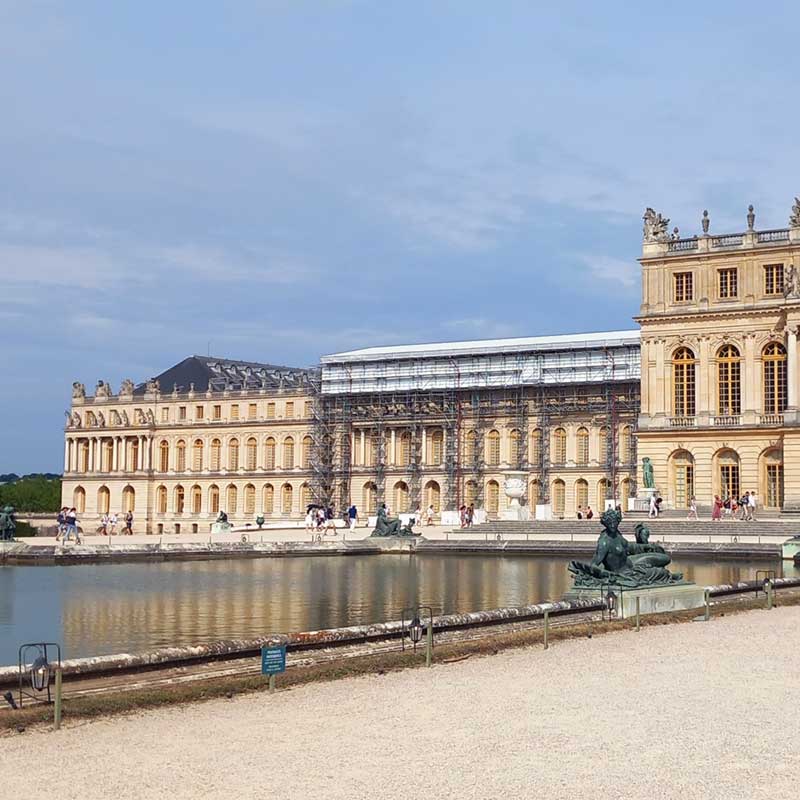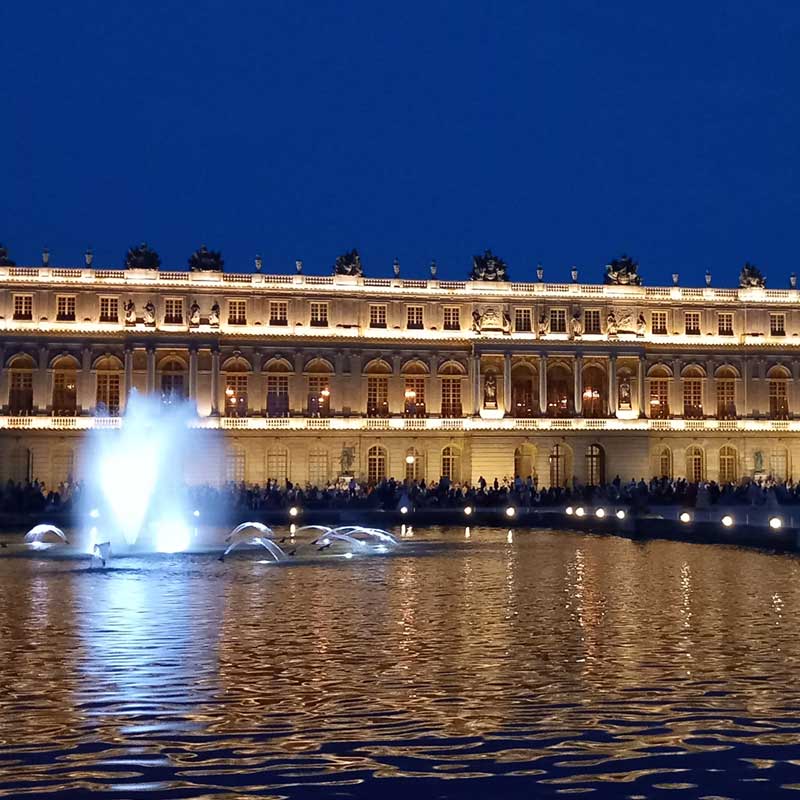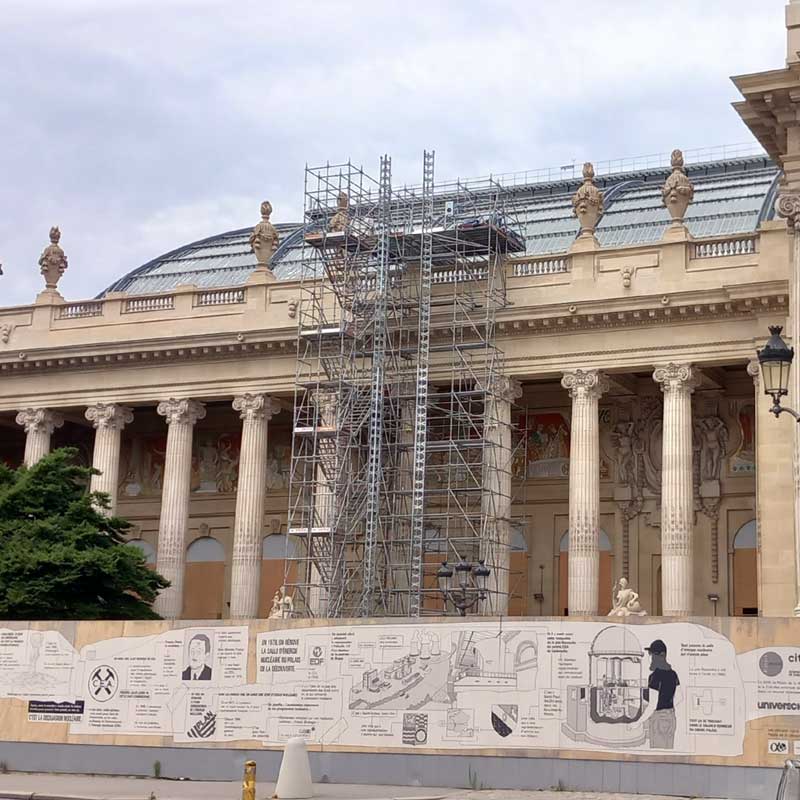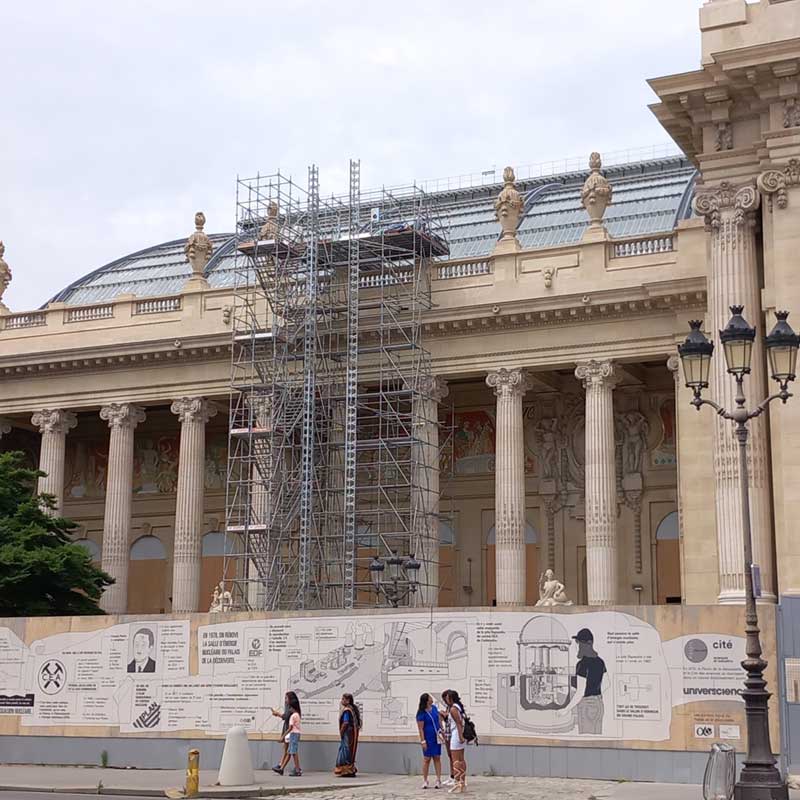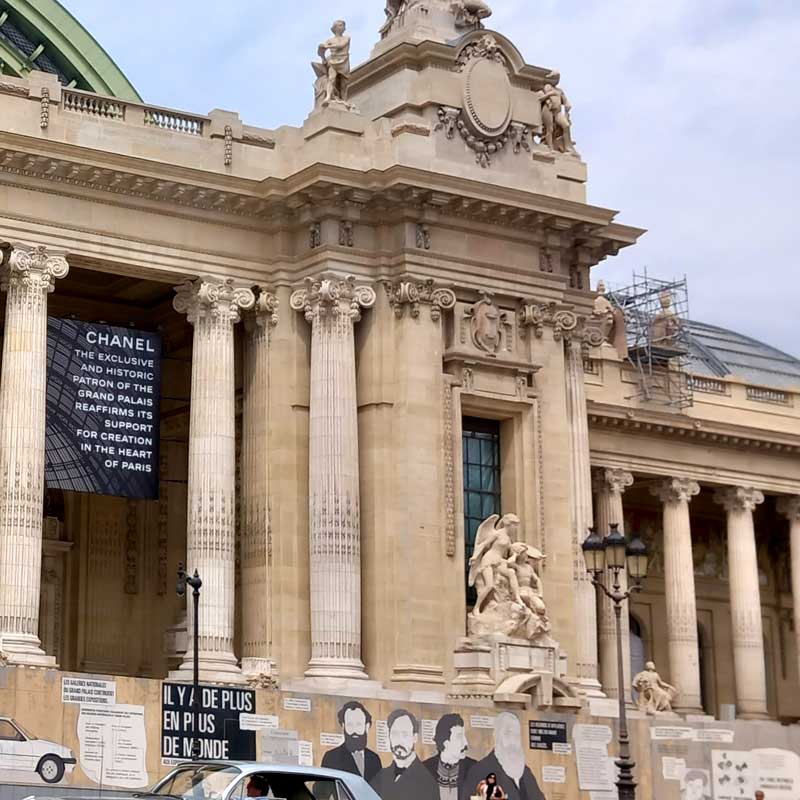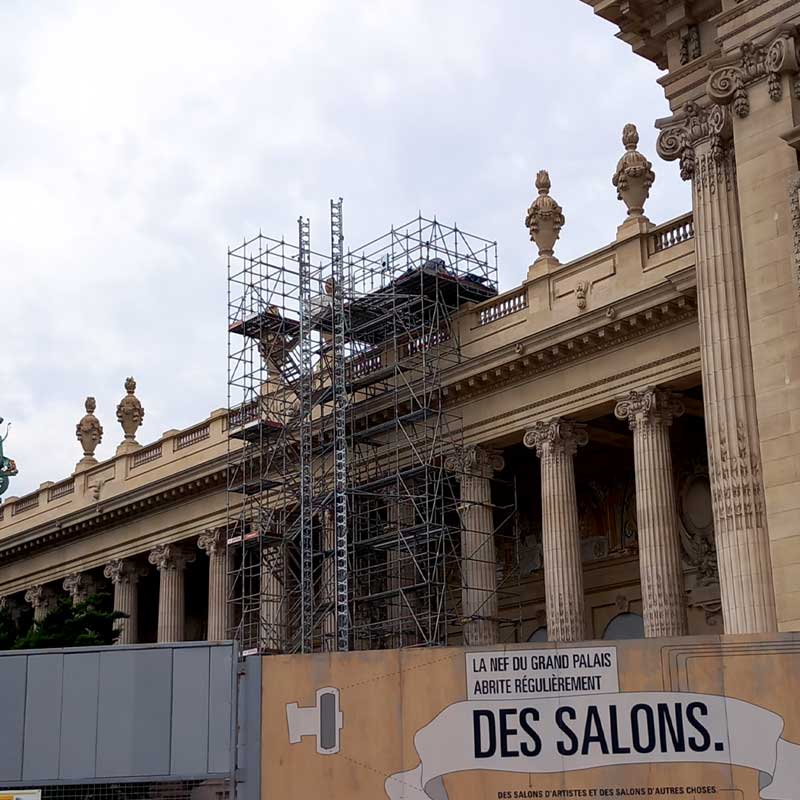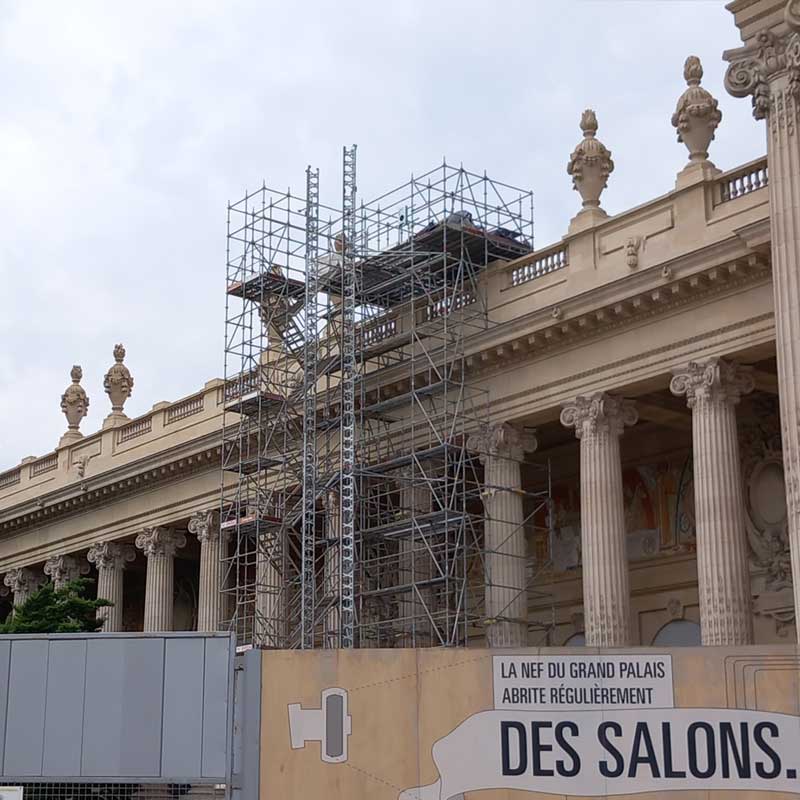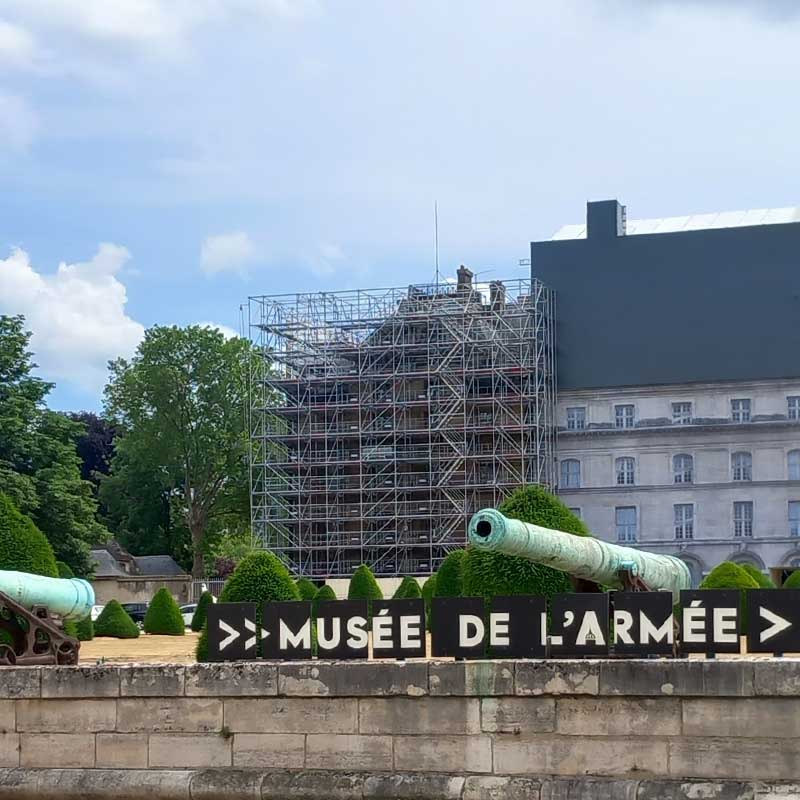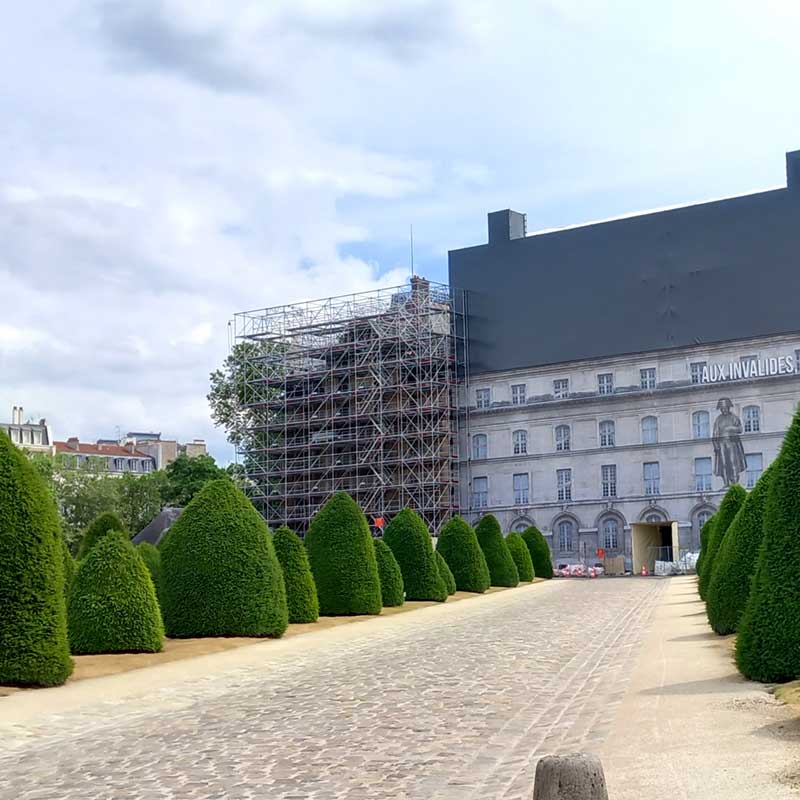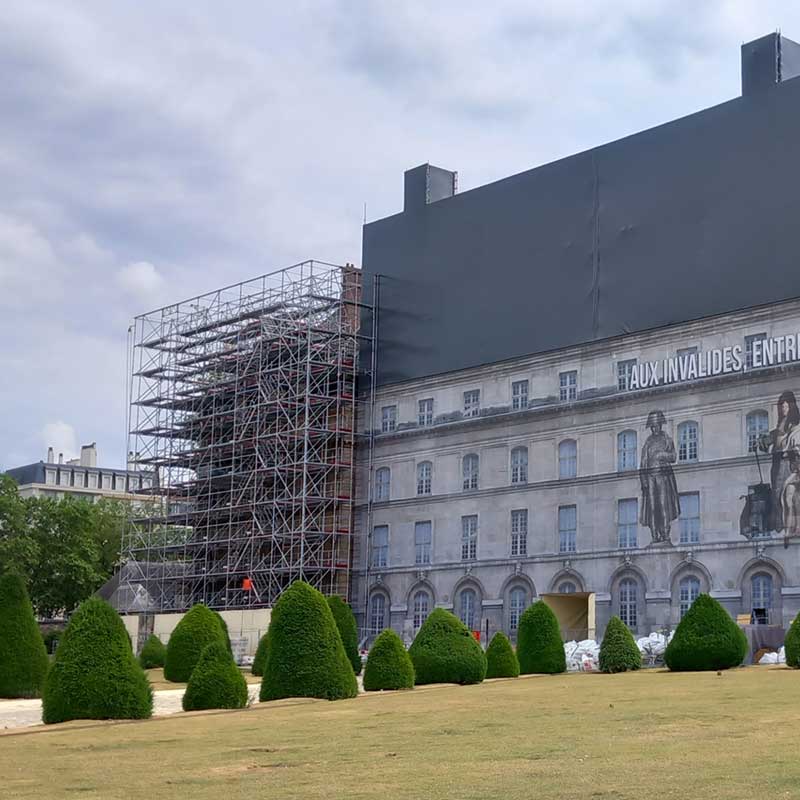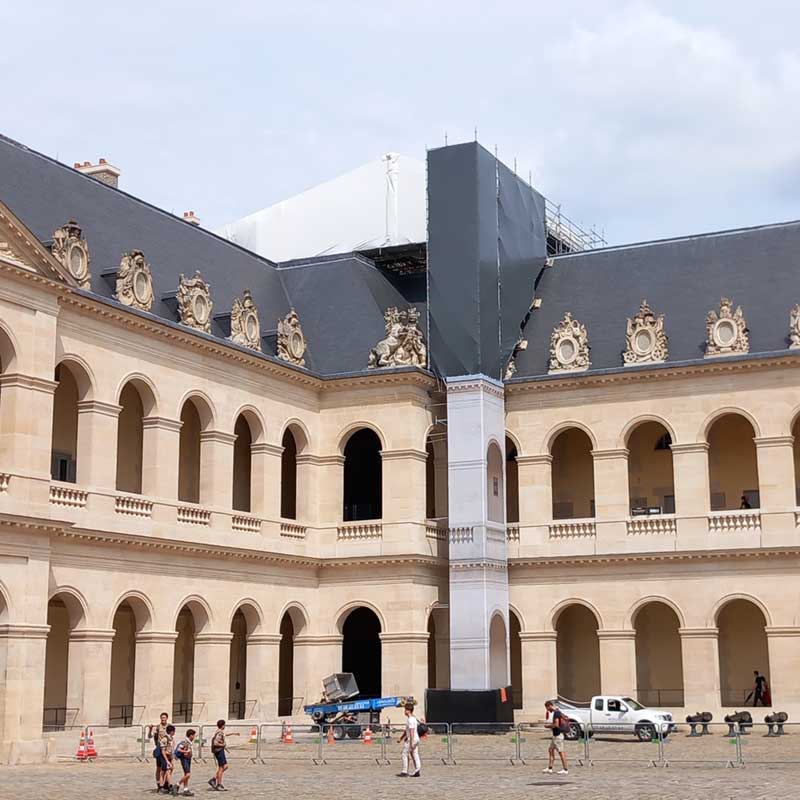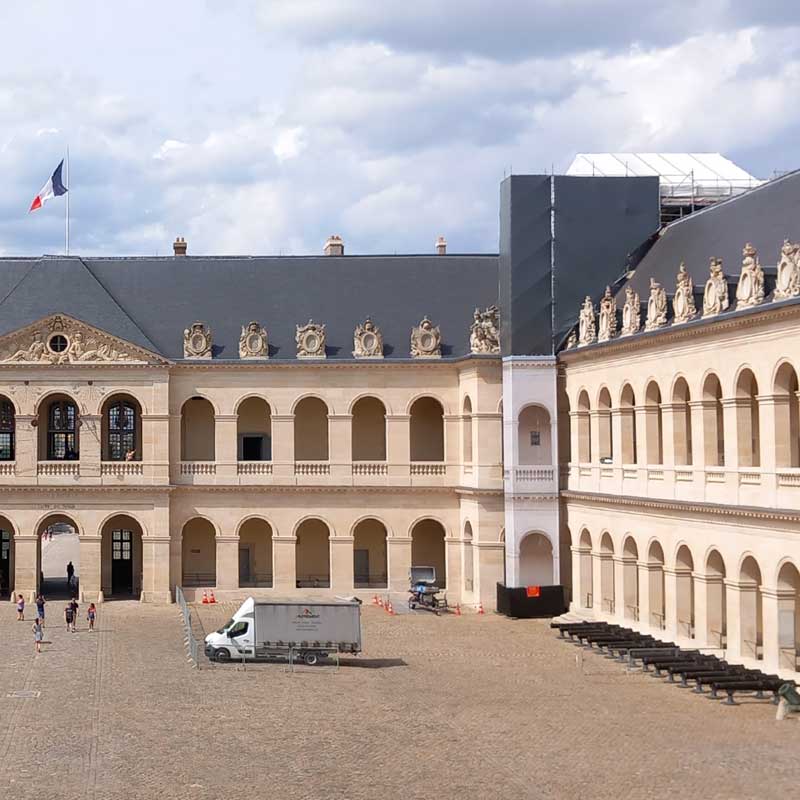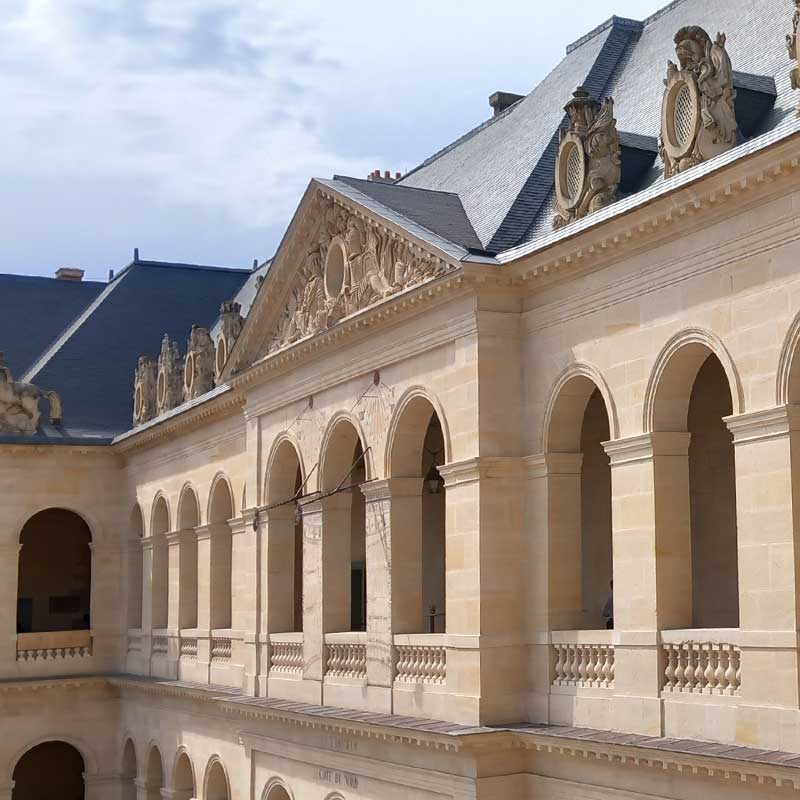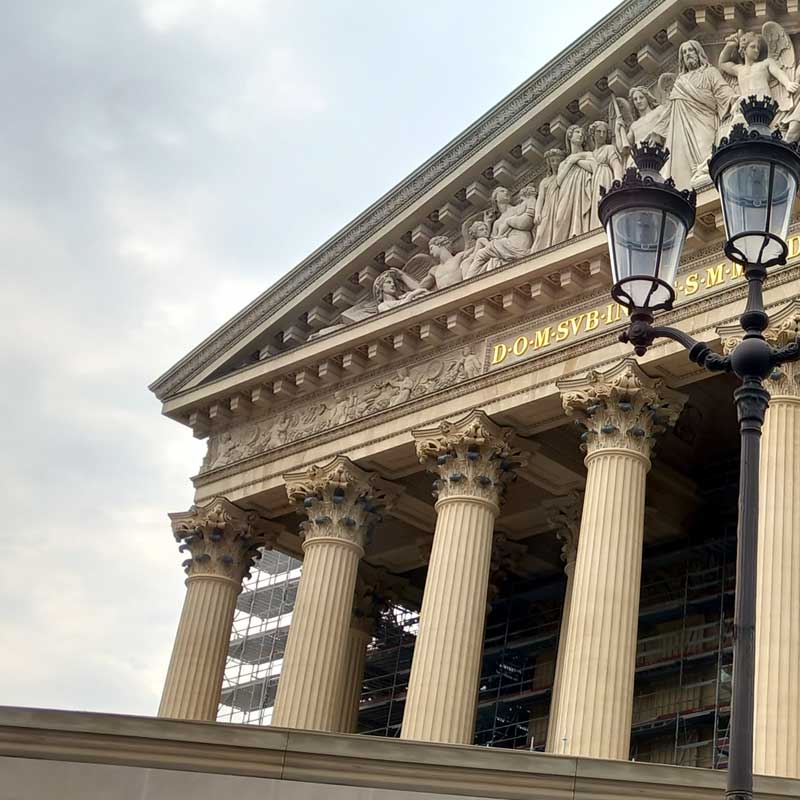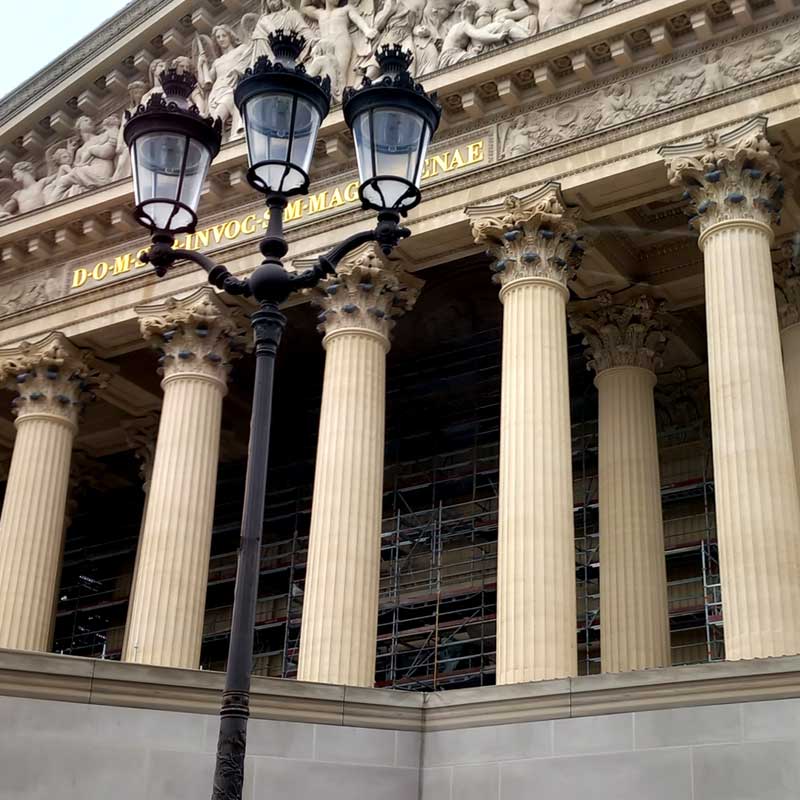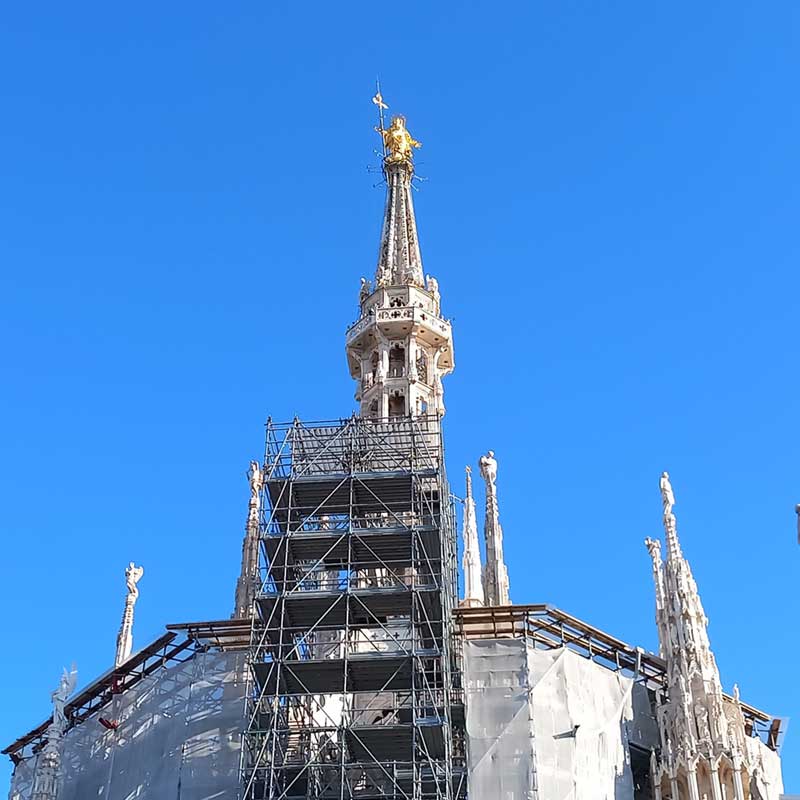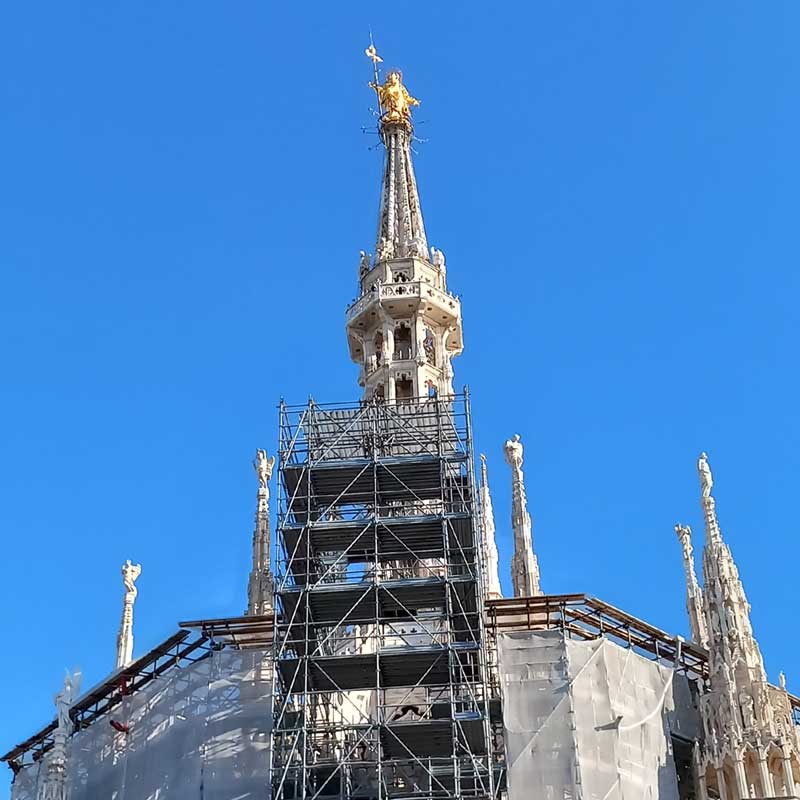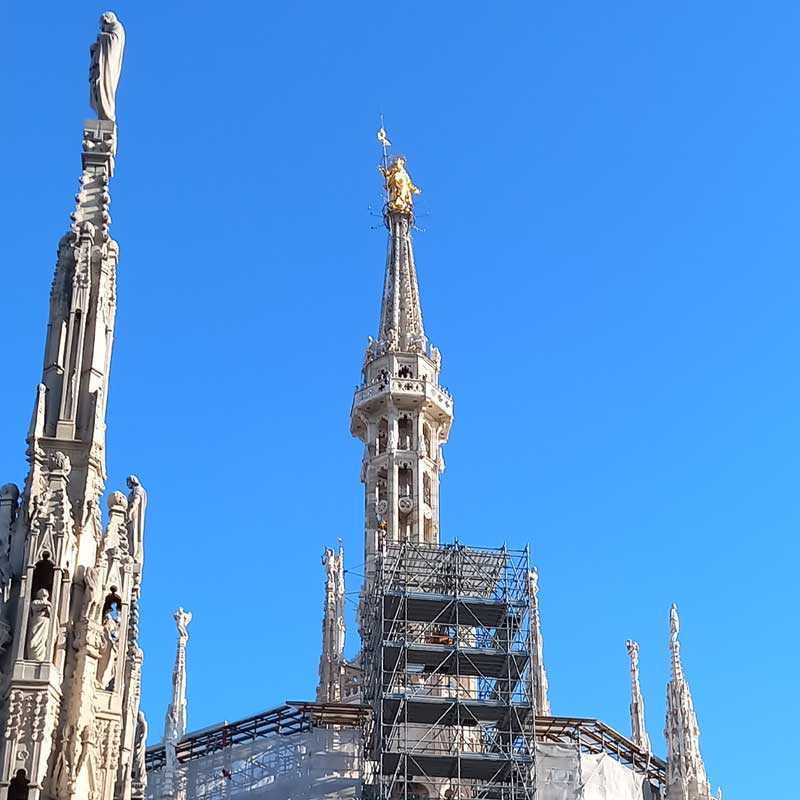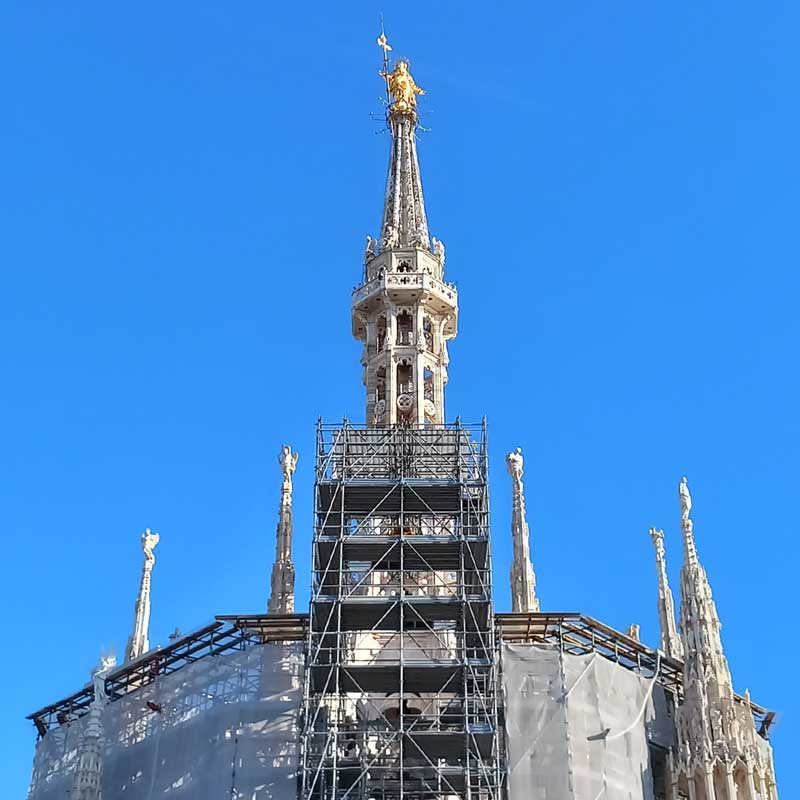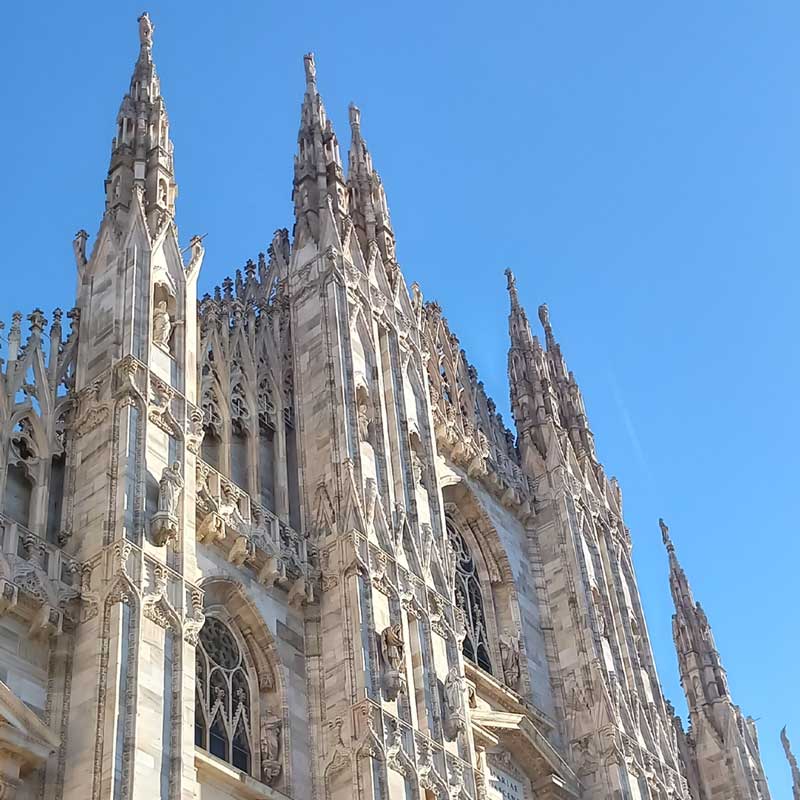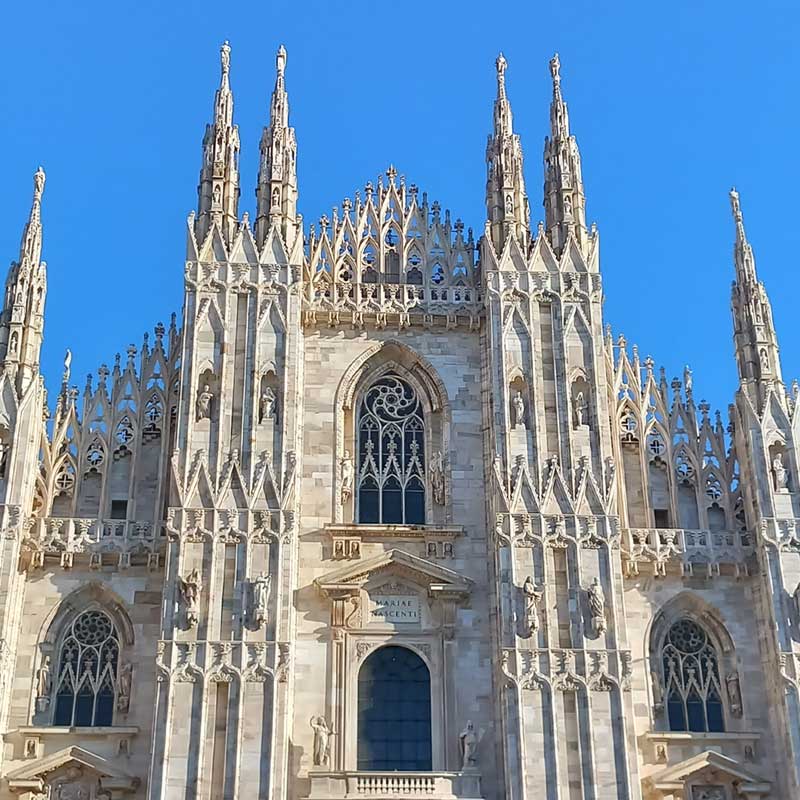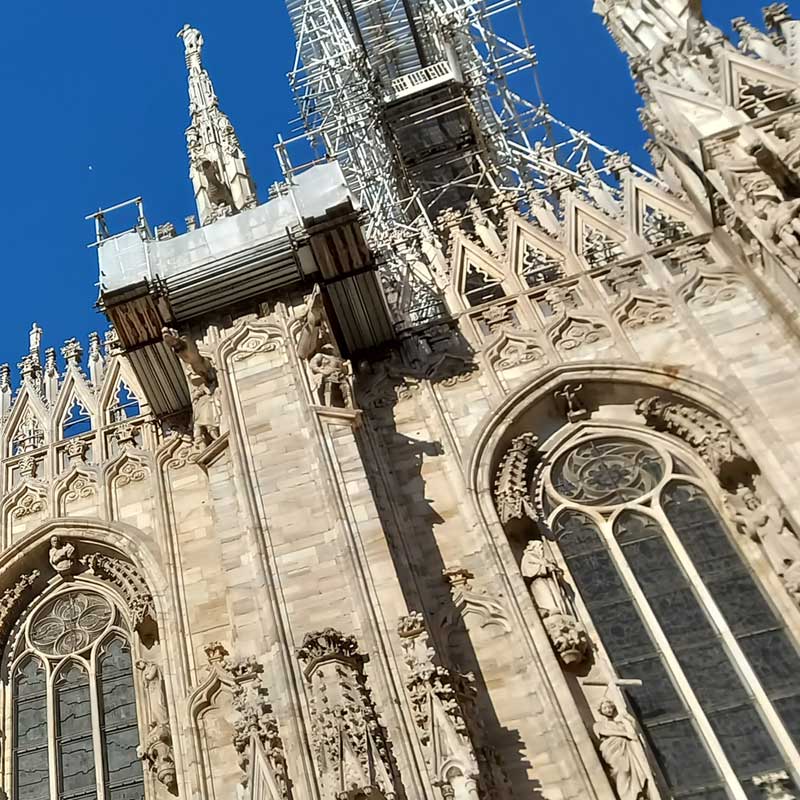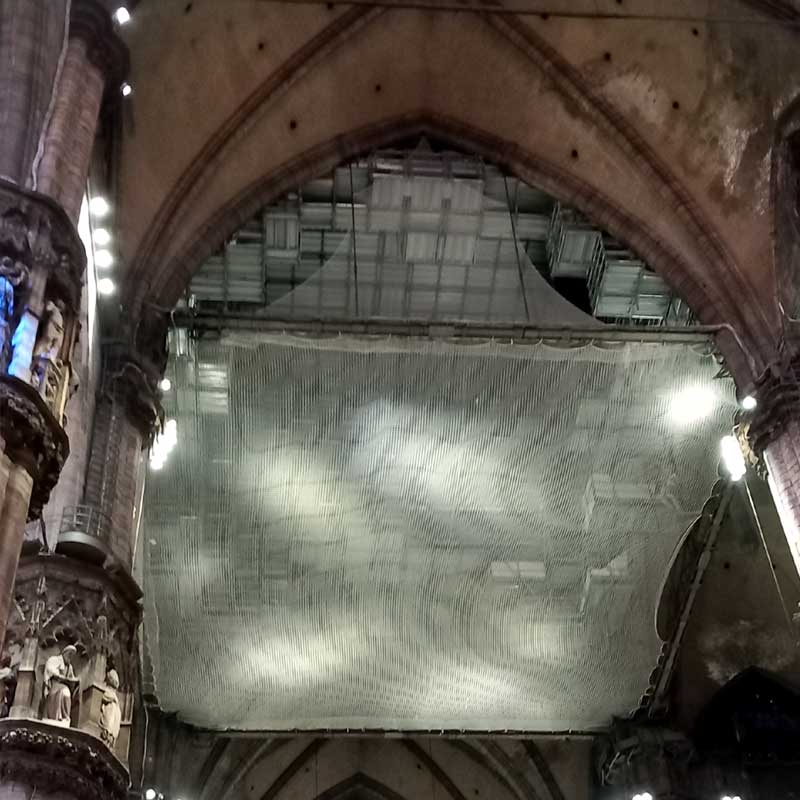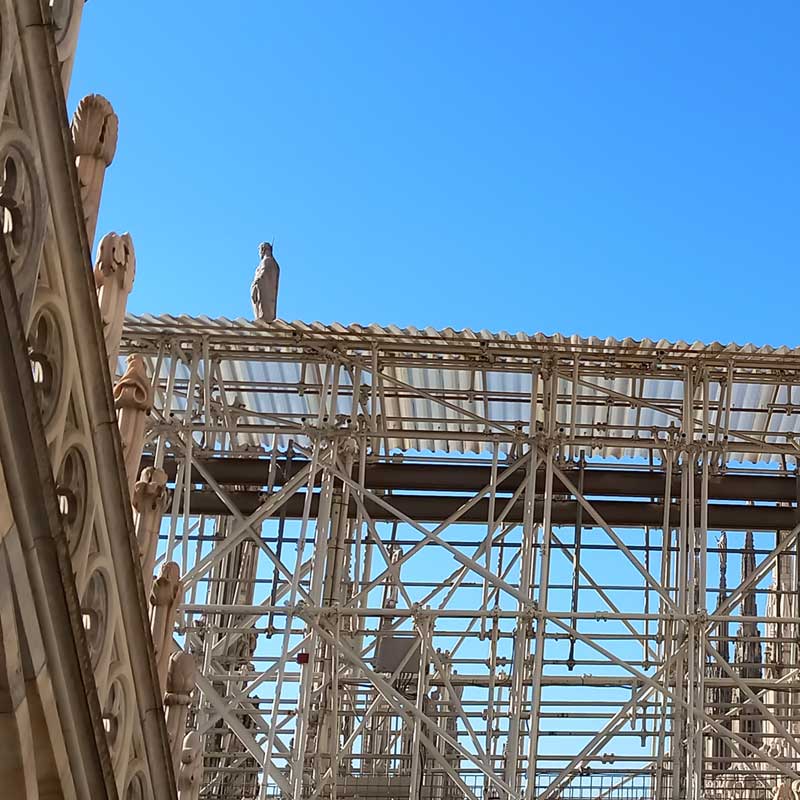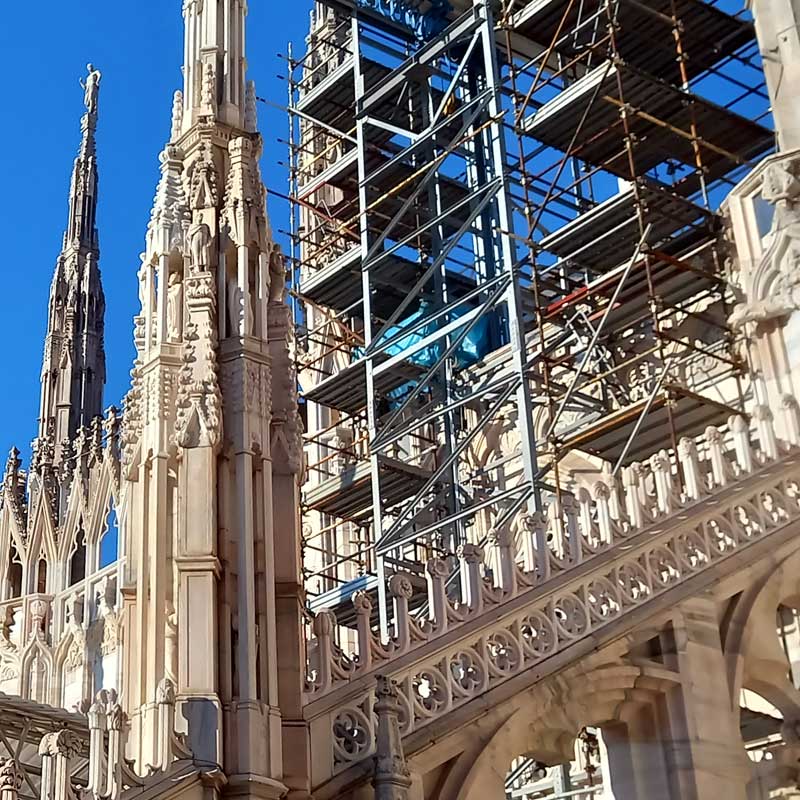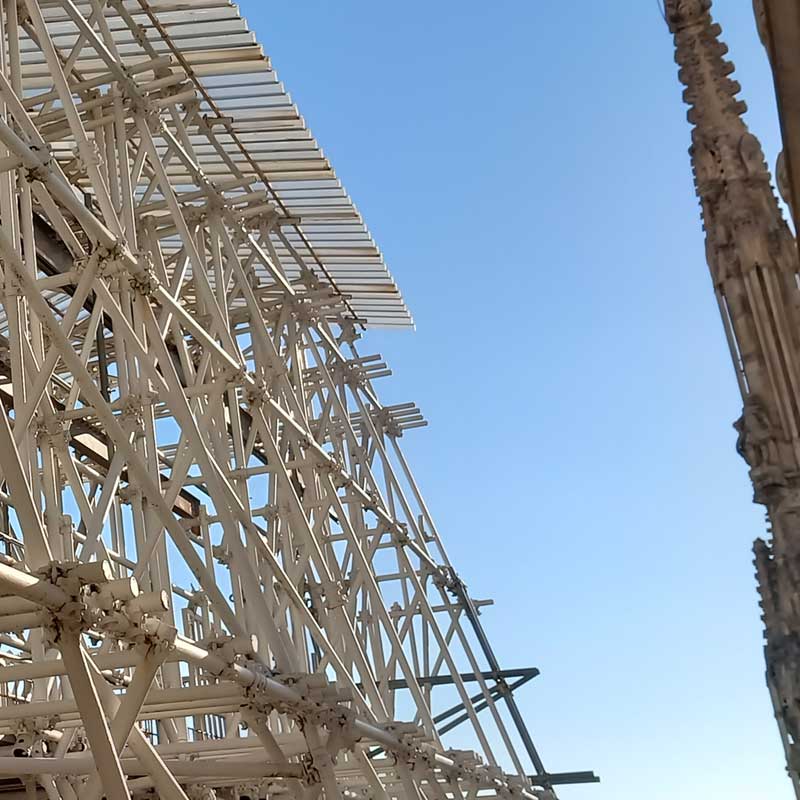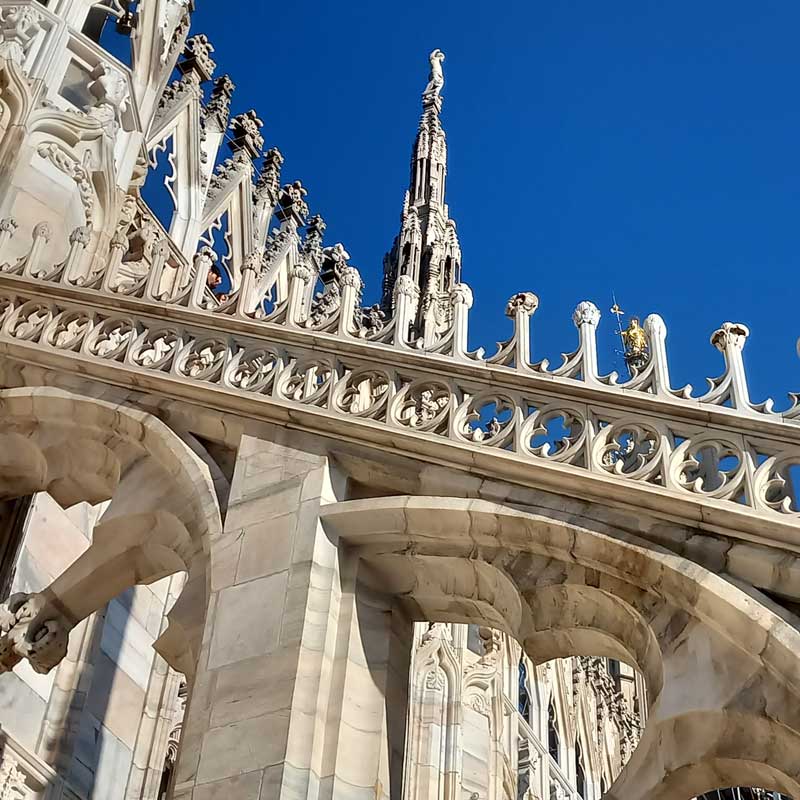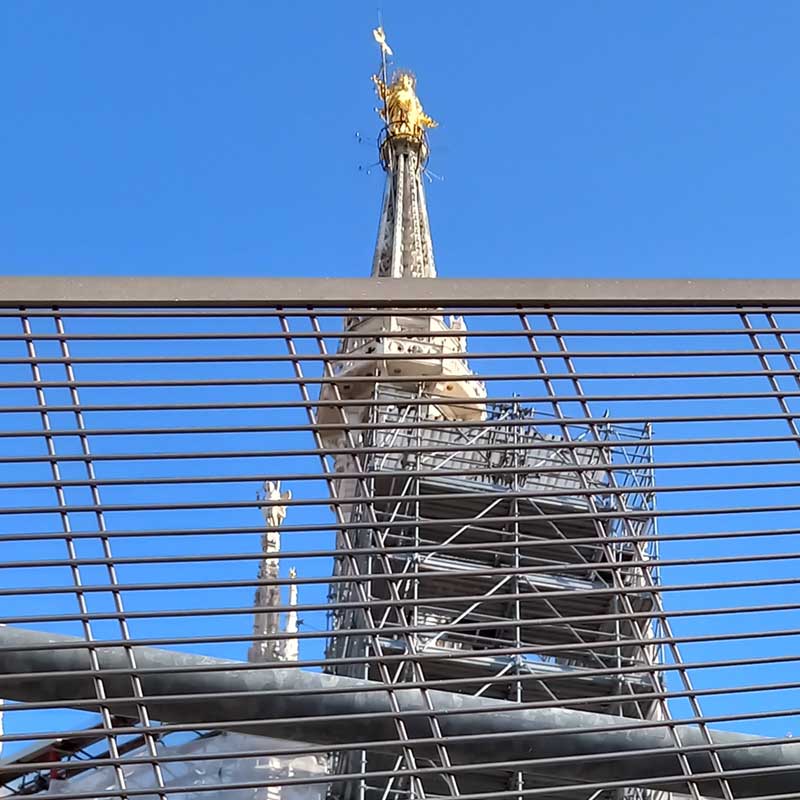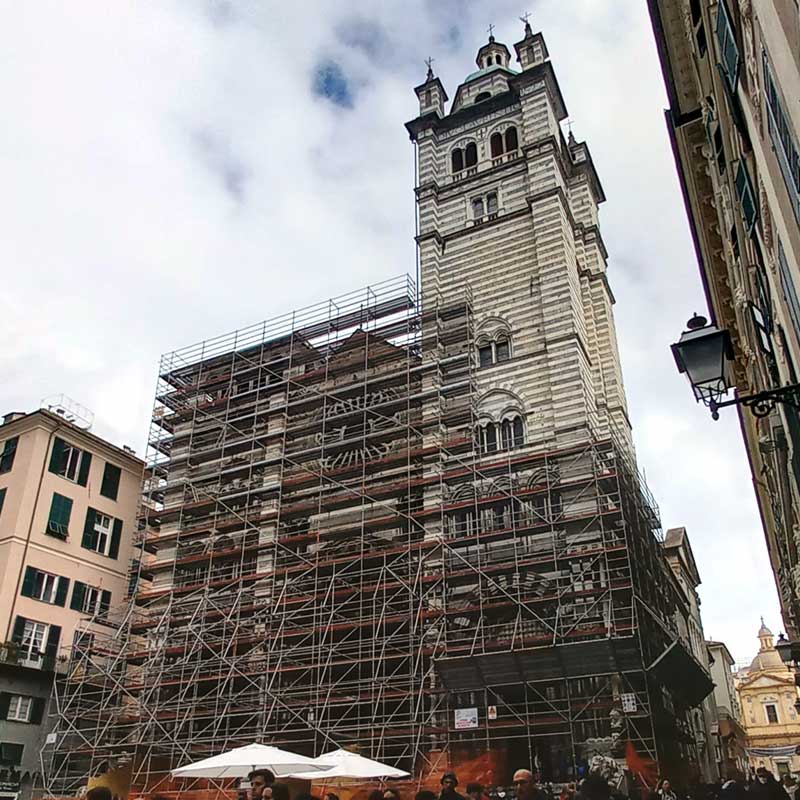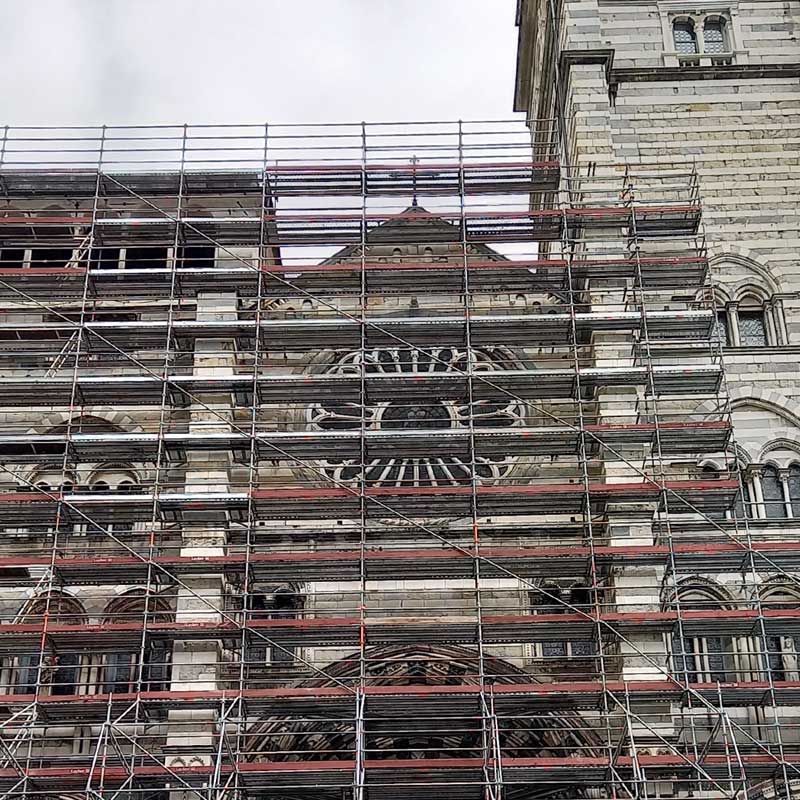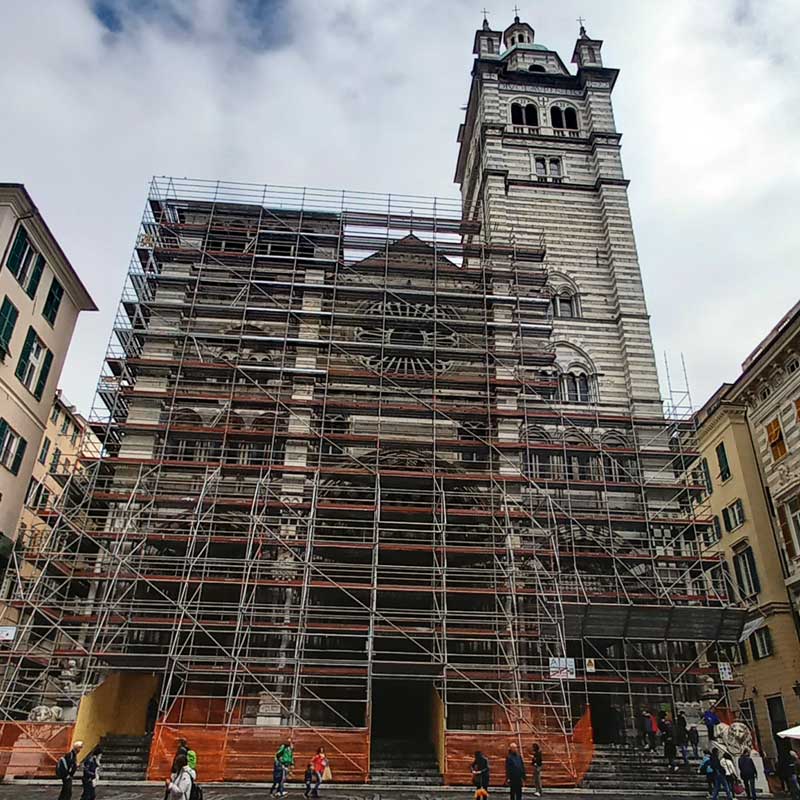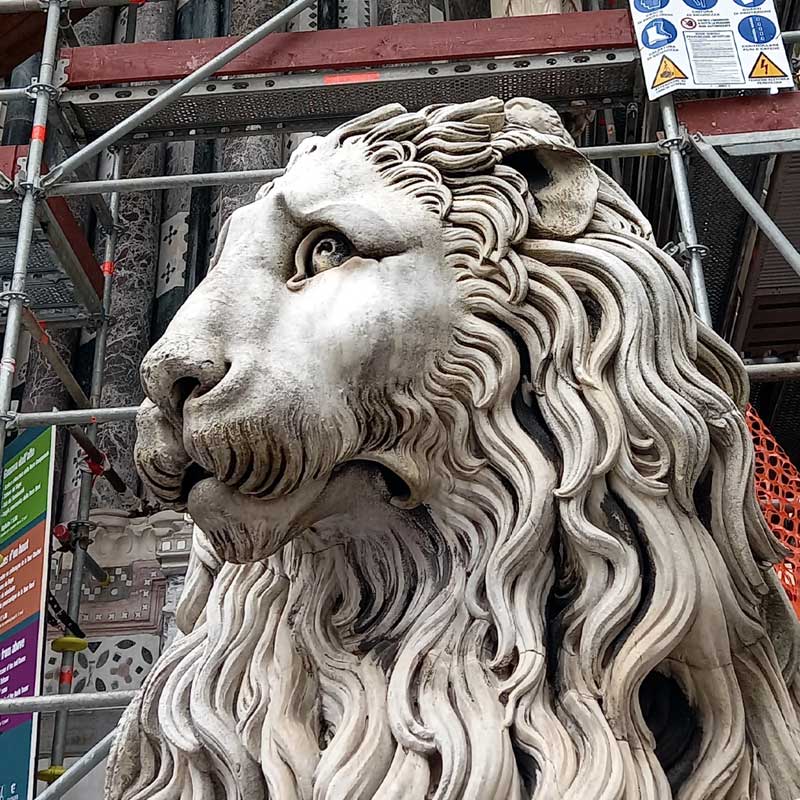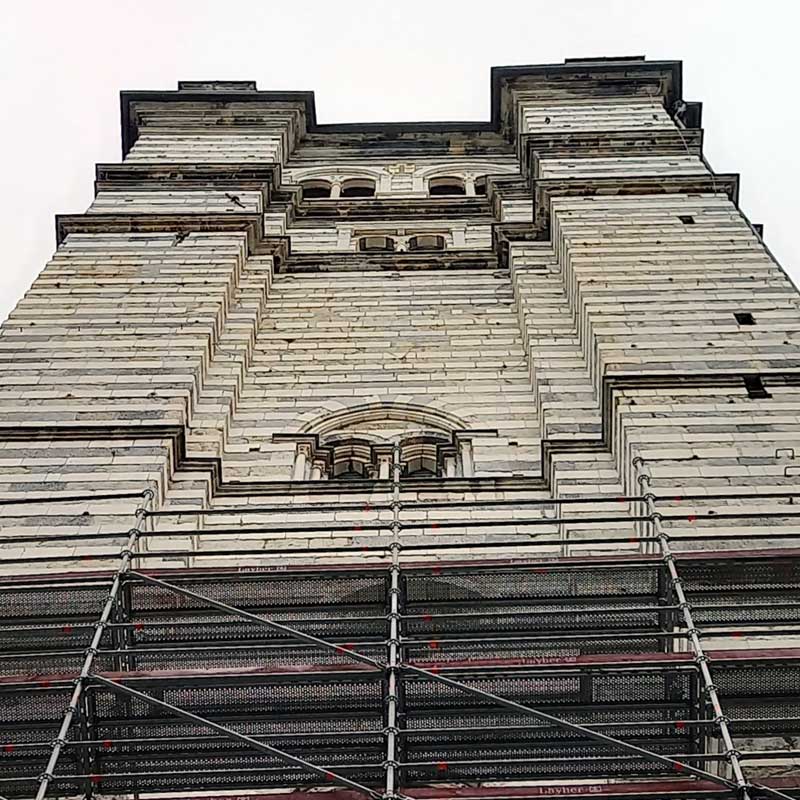Scaffolding for monument restoration
Historic monuments and buildings such as churches and cathedrals seem eternal and unchanging, built in the past and designed to last forever. In reality, to ensure that the elements do not ruin them, constant maintenance is required. Exactly as with any other building, monument restoration requires proper scaffolding that can adapt to the large size and great heights of these extraordinary construction sites. Here is a short list of some of the world's major monuments (and their related scaffolding) that are currently undergoing restoration.
On this page, discover the scaffolding used for the restoration of these monuments: Rouen - Notre-Dame Cathedral (Rouen, France) , Amboise Castle and Leonardo da Vinci's tomb (Amboise, France) , Chambord Castle (Chambord, France) , Cathedral of the Holy Cross in Orléans (Orléans, France) , Notre-Dame Cathedral in Paris (Paris, France) , 26 Champs-Élysées in Paris (Paris, France) , Luxembourg Palace (Paris, France) , Moulin Rouge (Paris, France) , Palace of Versailles (Versailles, France) , Grand Palais (Paris, France) , Hôtel des Invalides & Musée de l'Armée (Paris, France) , Madeleine Church (Paris, France) , Milan Cathedral (Milan, Italy) , Cathedral of San Lorenzo (Genoa, Italy).
Many major French and Italian historical monuments are covered by scaffolding for their restoration.
For each of them, special scaffolding has been used, able to adapt to the large dimensions and great heights of these extraordinary construction sites that will have to be in the public eye for several months.
This (apparently minor) aspect is not to be underestimated: while it is necessary to guarantee the safety of the workers involved in the restoration, it is also necessary to ensure:
- the accessibility of monuments for tourists and visitors (who often paid a ticket to see... a historical monument, not a scaffold)
- the total safety of tourists and visitors, who find themselves (literally) walking in the middle of an open-air construction site
- the aesthetic and environmental impact (the 'beauty') of scaffolding used for the restoration of the façades of historic buildings, which often requires the use of tarpaulins, banners and micro-perforated mesh to cover large scaffolding, used to make the scaffolding underneath 'invisible' and to let the tourists imagine - at least for a moment - that the monument is right there in front of them.
To meet all these requirements, the two types of scaffolding most commonly used for the restoration of monuments and facades of historic buildings are:
- the "tube-and-joint" scaffold, which allows total freedom in the construction of working scaffolds capable of adapting to even very complex facade shapes;
- the "multidirectional scaffolding", which allows a fair degree of freedom of action and faster assembly than the tube-and-joint scaffolding
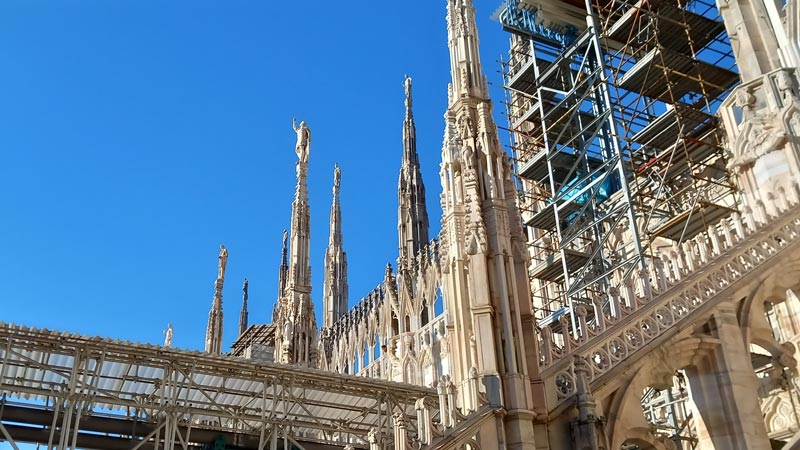
France
Right now, many of France's major historical monuments are covered by scaffolding for their restoration. Why? France is preparing for the 2024 Olympics: it is the perfect opportunity to make a good impression on tourists from all over the world. Here is a list of the major French monuments (and their scaffolding) currently undergoing restoration. You might not see a beautiful monument. But it would be a good opportunity to see some nice scaffolding.
Paris will host the 2024 Olympics. Such an important event was an opportunity for the capital of France to carry out a series of restorations and extraordinary maintenance work on public monuments and some of the most characteristic places visited by tourists.
Here is a short list of some of the monuments in Paris - and other major French cities - currently undergoing restoration.
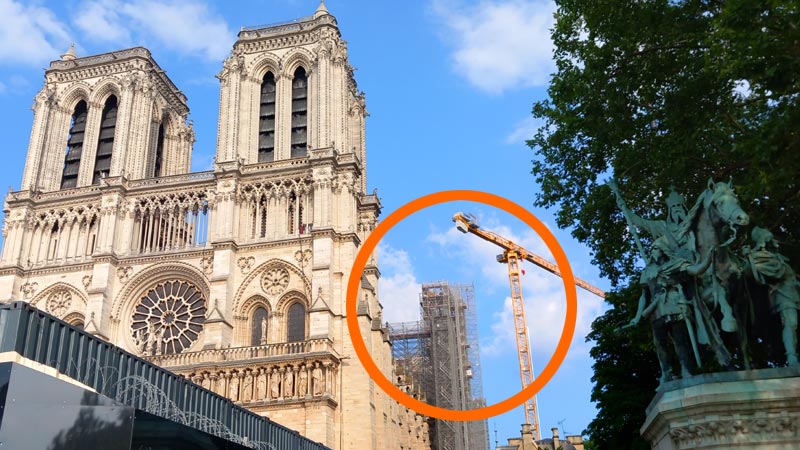
Rouen: scaffolding for the restoration of Notre-Dame Cathedral (Rouen, France)
Scaffolding for the restoration of Amboise Castle and Leonardo da Vinci's tomb (Amboise, France)
Leonardo da Vinci's tomb is currently (summer 2023) under renovation and cannot be visited. On the other hand, it is possible to admire an excellent scaffolding covering the façade, which extends vertically along the entire height of the perimeter walls of the castle of Amboise, where the chapel with the remains of the Italian genius is located.
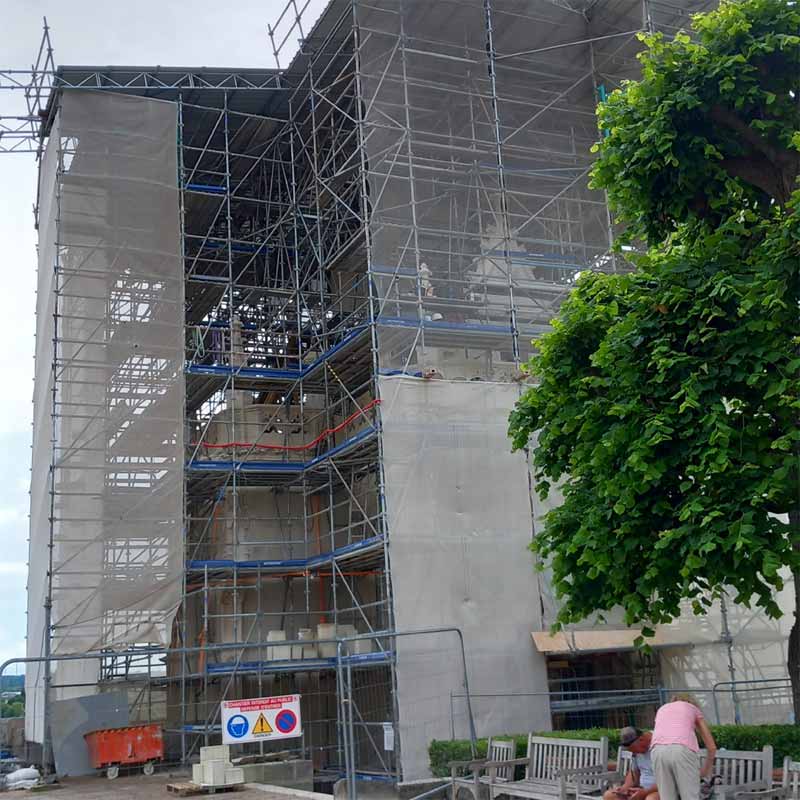
Château d'Amboise (Amboise, France): Leonardo Da Vinci's tomb, currently unvisitable due to renovation work.
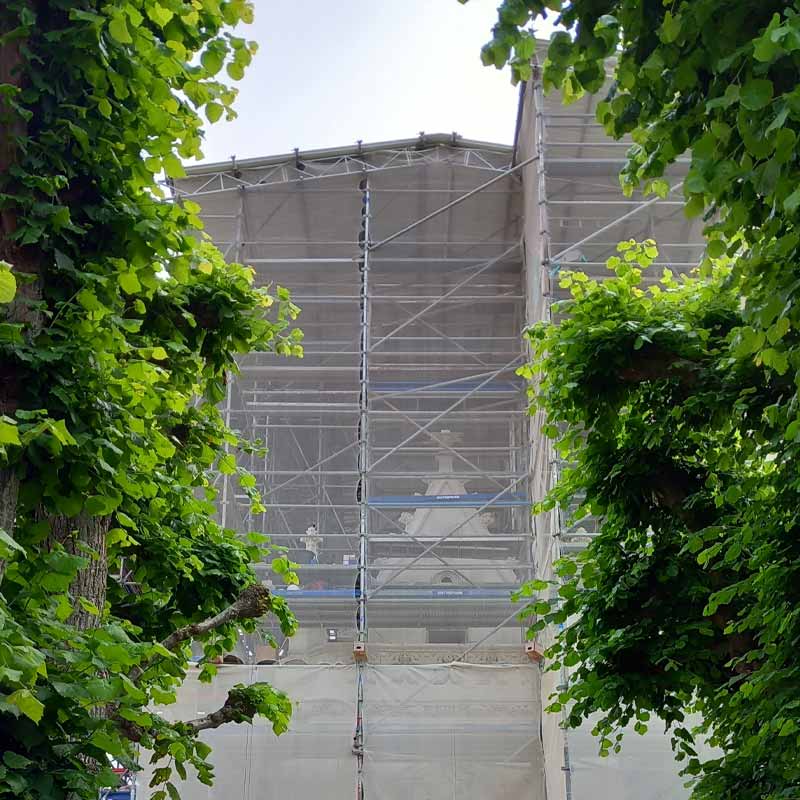
Château d'Amboise (Amboise, France): Leonardo Da Vinci's tomb, currently unvisitable due to renovation work.
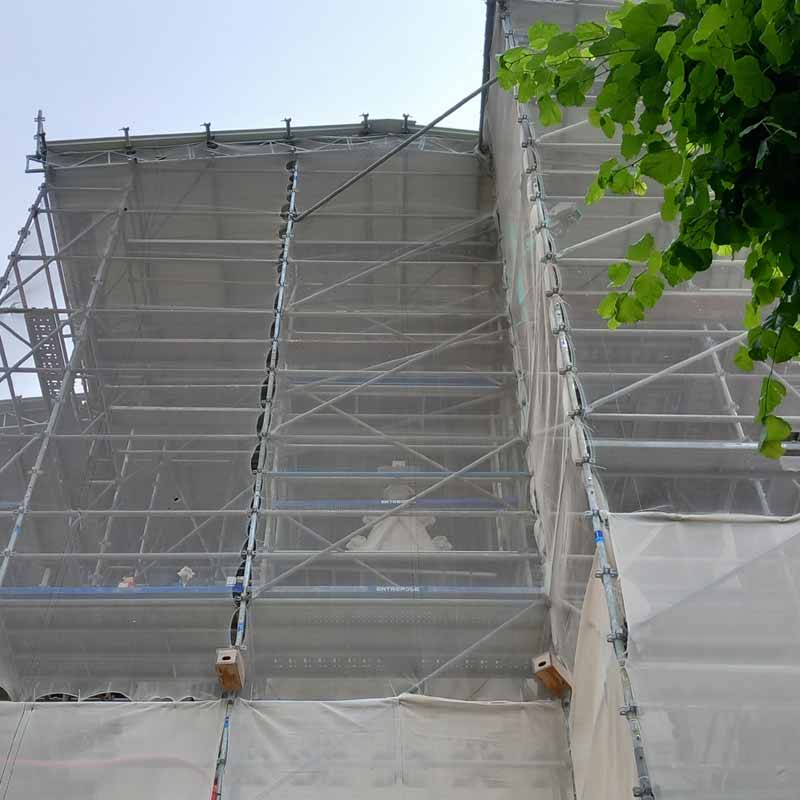
Château d'Amboise (Amboise, France): Leonardo Da Vinci's tomb, currently unvisitable due to renovation work.
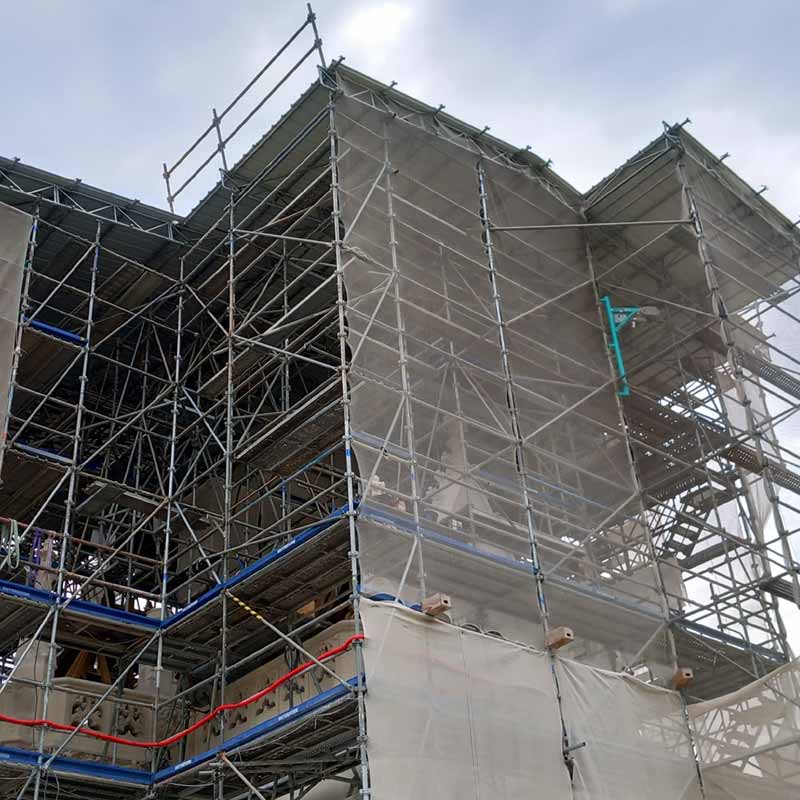
Château d'Amboise (Amboise, France): Leonardo Da Vinci's tomb, currently unvisitable due to renovation work.
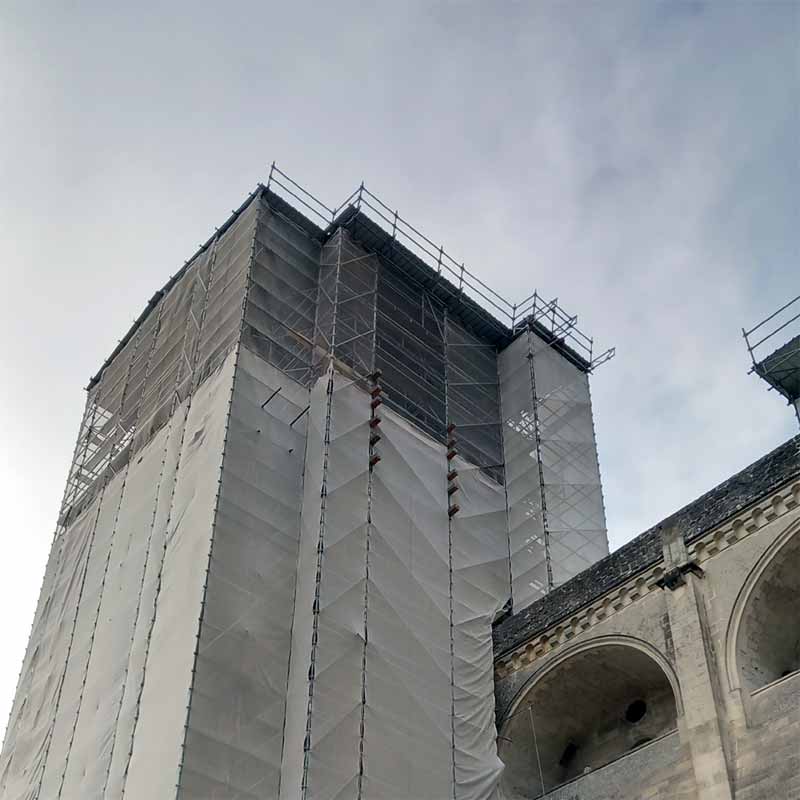
Château d'Amboise (Amboise, France): scaffolding covering Leonardo Da Vinci's tomb, which cannot currently be visited due to renovation work.
Scaffolding for the restoration of Chambord Castle (Chambord, France)
Scaffolding for the restoration of the Cathedral of the Holy Cross in Orléans (Orléans, France)
Scaffolding for the restoration of the Notre-Dame Cathedral in Paris (Paris, France)
The Notre-Dame Cathedral is without doubt the largest construction site for a renovation of a historic building visible in Paris at the moment. The historic cathedral is scheduled to reopen to the public in 2024. The scaffolding erected in the church is 600 tonnes, and the total planned expenditure for the construction site is around 850 million euros.
Scaffolding for the restoration of 26 Champs-Élysées in Paris (Paris, France)
Scaffolding for the restoration of 26 Champs-Élysées in Paris (Paris, France). It is not a monument, but it is nevertheless an area with a high concentration of tourists. The building is being renovated and will house commercial and office areas.
Scaffolding for the restoration of the Luxembourg Palace (Paris, France)
Scaffolding for the restoration of the Moulin Rouge (Paris, France)
Scaffolding for the restoration of the Palace of Versailles (Versailles, France)
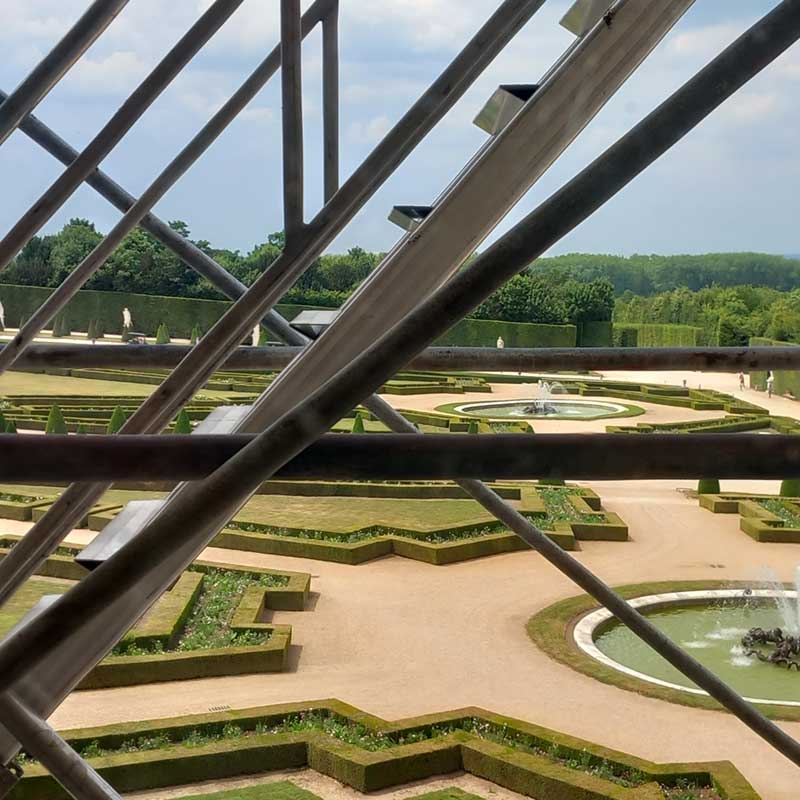
View of the gardens of Versailles showing from inside the scaffolding used to restore the façade of the historic palace (Versailles, France).
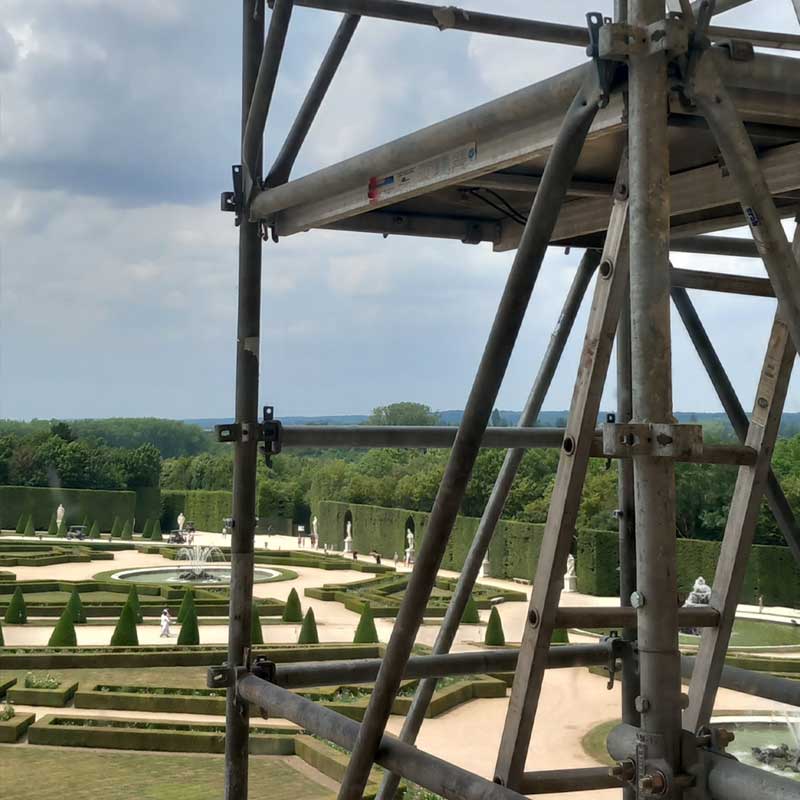
View of the gardens of Versailles showing from inside the scaffolding used to restore the façade of the historic palace (Versailles, France).
Scaffolding for the restoration of the Grand Palais (Paris, France)
Scaffolding for the restoration of the Hôtel des Invalides & Musée de l'Armée (Paris, France)
The scaffolding used for the restoration of this historic building was covered with mesh, micro-perforated mesh prints specially designed for the scaffold's covering, made to be wind-permeable and fireproof. This was done to prevent the building site from turning into a huge sail in bad weather that could exert great tensile forces on the scaffolding and facades below. And at the same time to hide, from the eyes of tourists, the construction site itself.
Scaffolding for the restoration of the Madeleine Church (Paris, France)
Italy
Italy is one of the largest countries in the world to host historical monuments. Such monuments are a great attraction for national and international tourism. Often these works are found concentrated in the major cities of the "Belpaese." And although these great works of the past (such as churches, cathedrals and historic buildings) seem eternal and unchanging, they actually need constant maintenance.
Here is a short list of some of the Italian monuments that are (or have recently) undergoing restoration-and their related scaffolding.
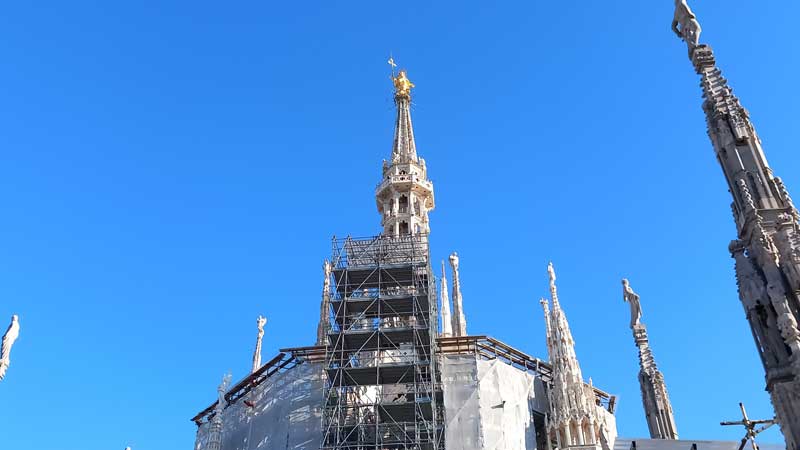
Scaffolding for the restoration of Milan Cathedral (Milan, Italy)
Scaffolding for the restoration of the Cathedral of San Lorenzo (Genoa, Italy)
The restoration of the Cathedral of San Lorenzo in Genoa was carried out from March 2022 and completed in May 2023.
Last update:
